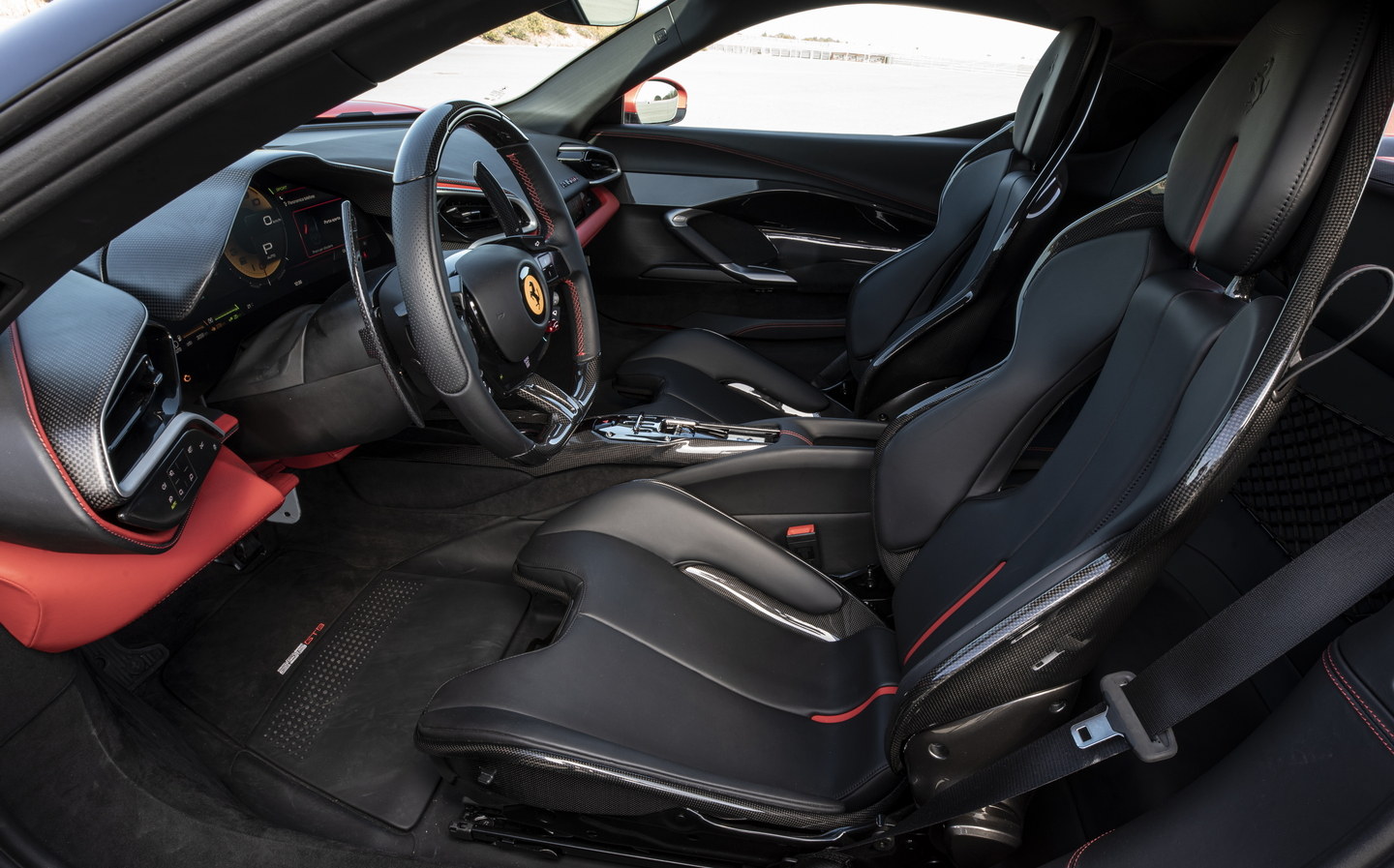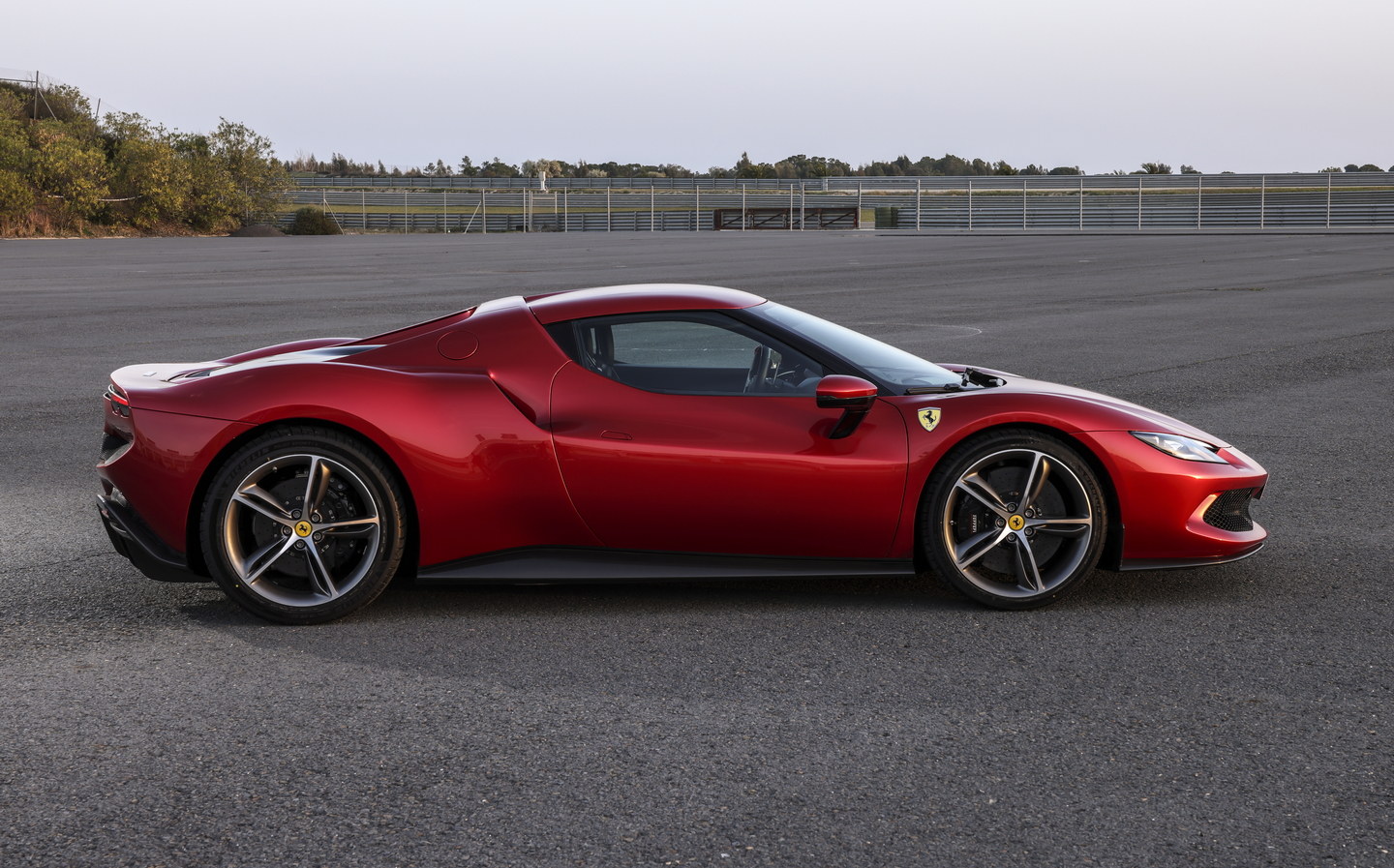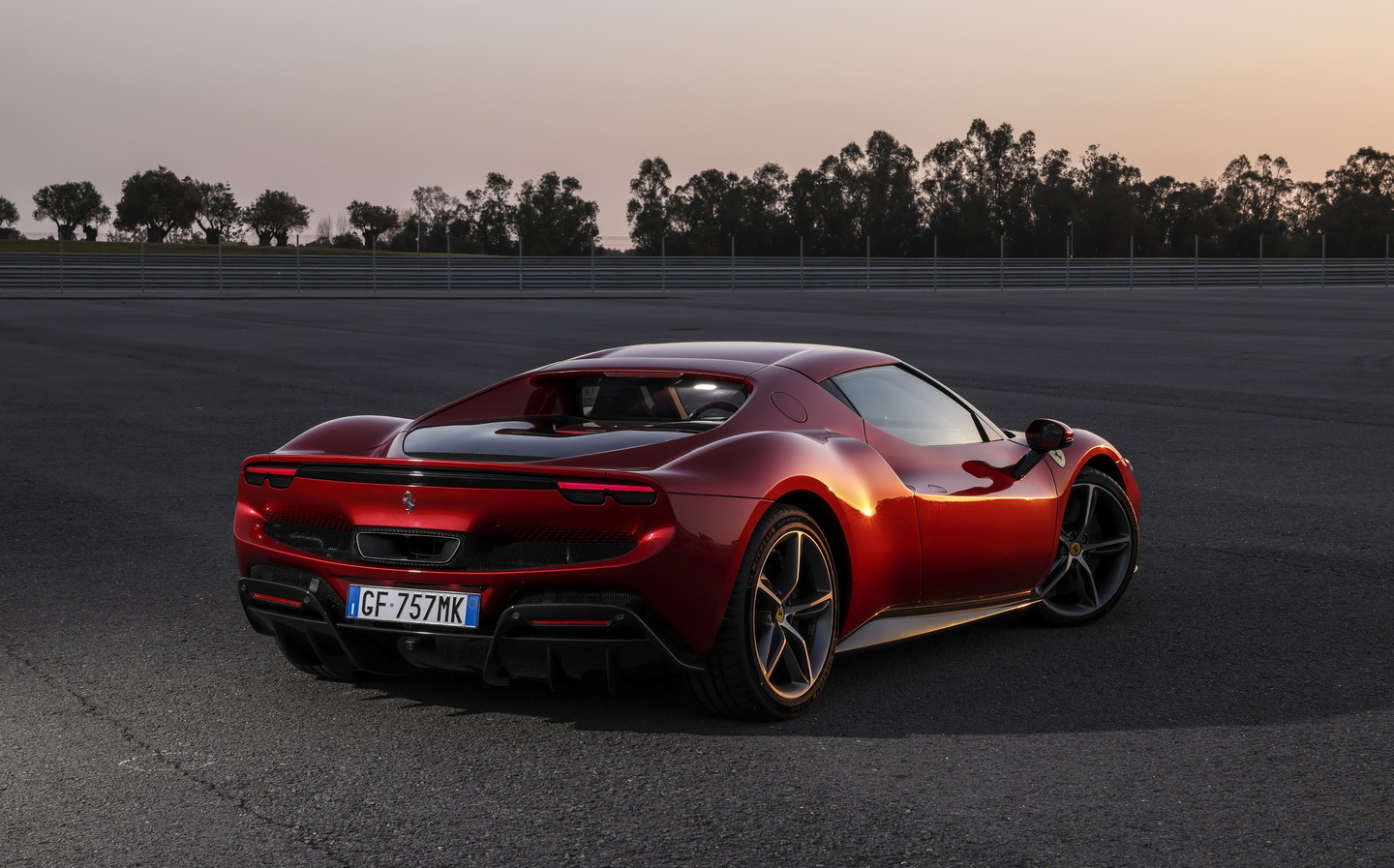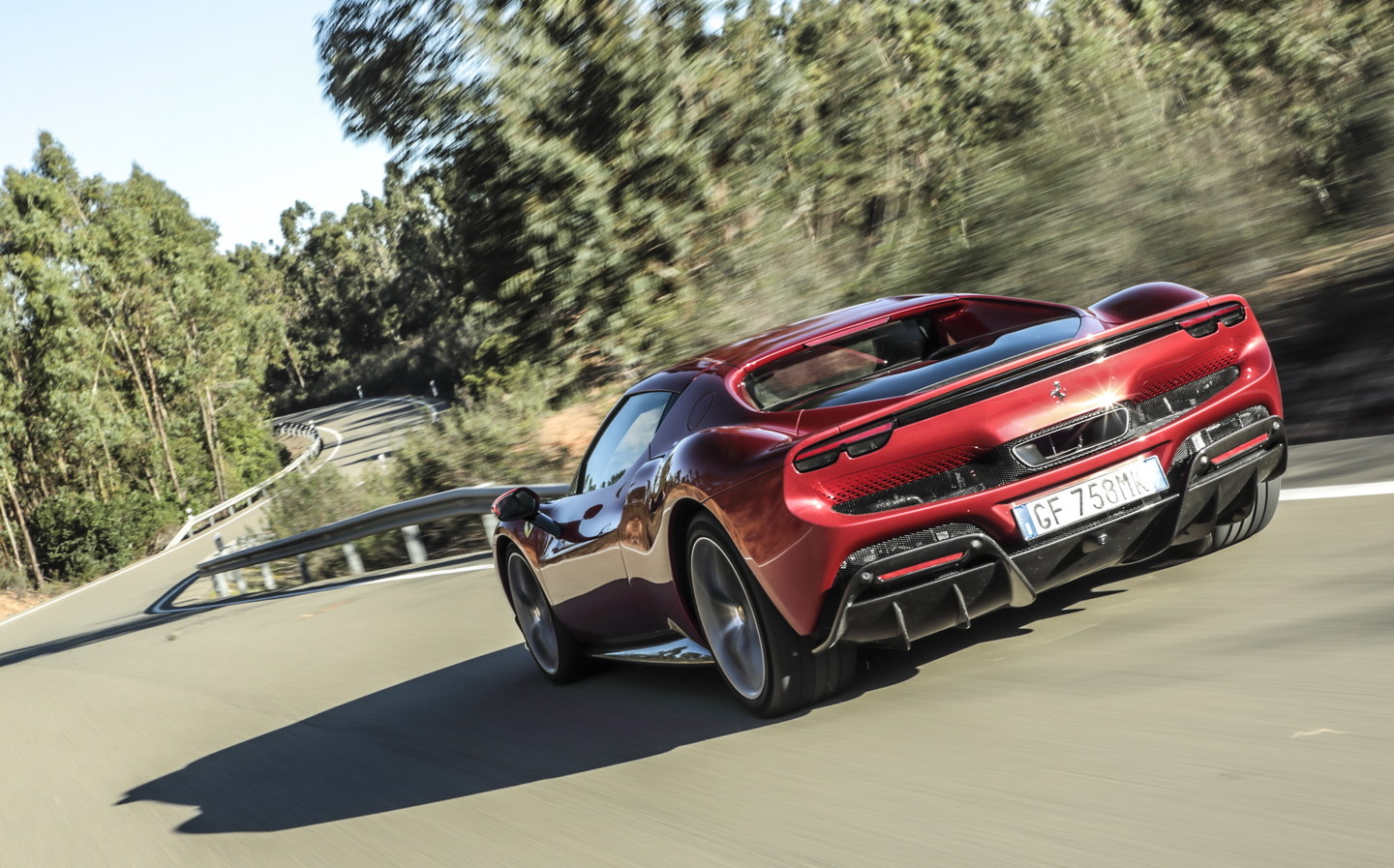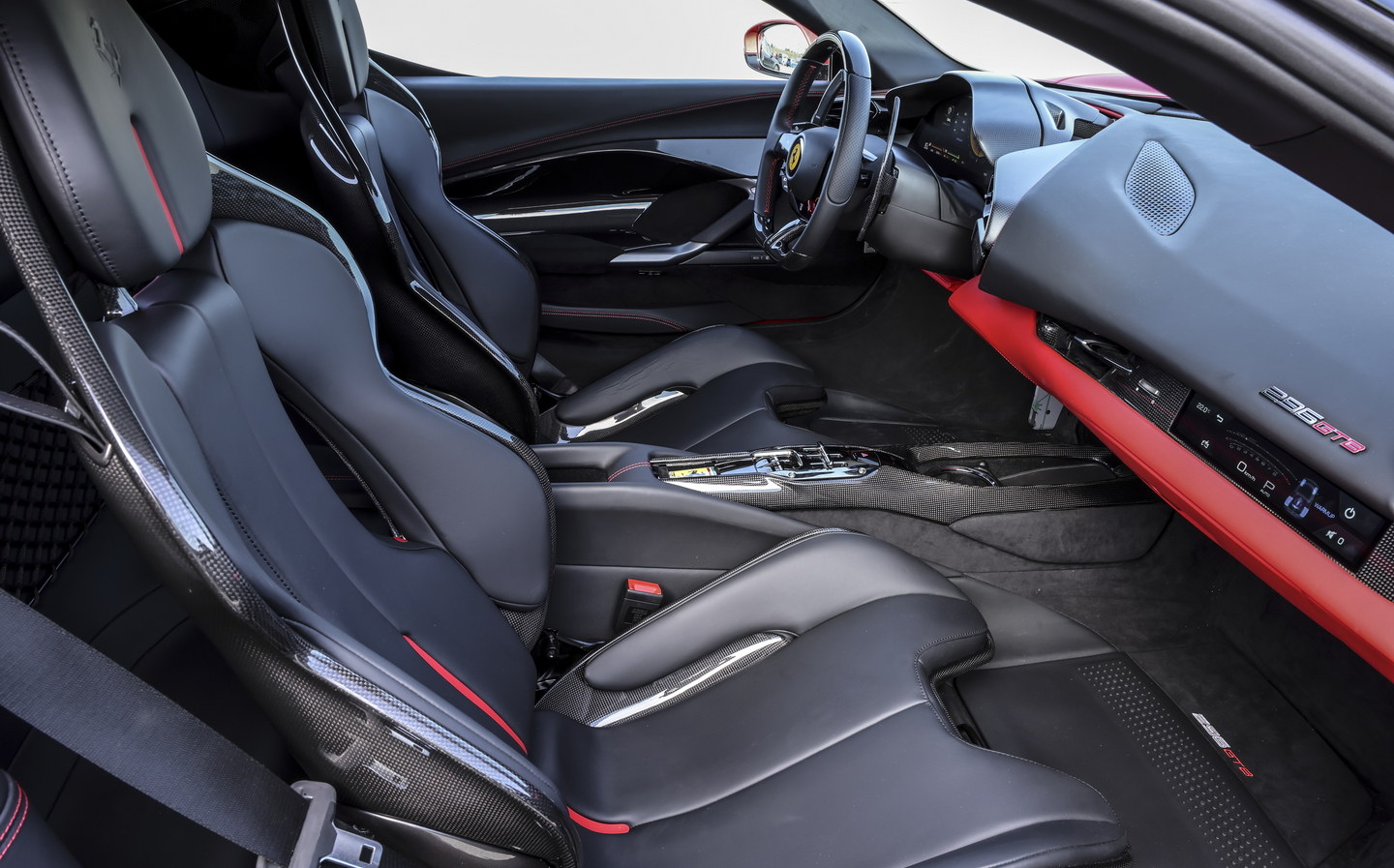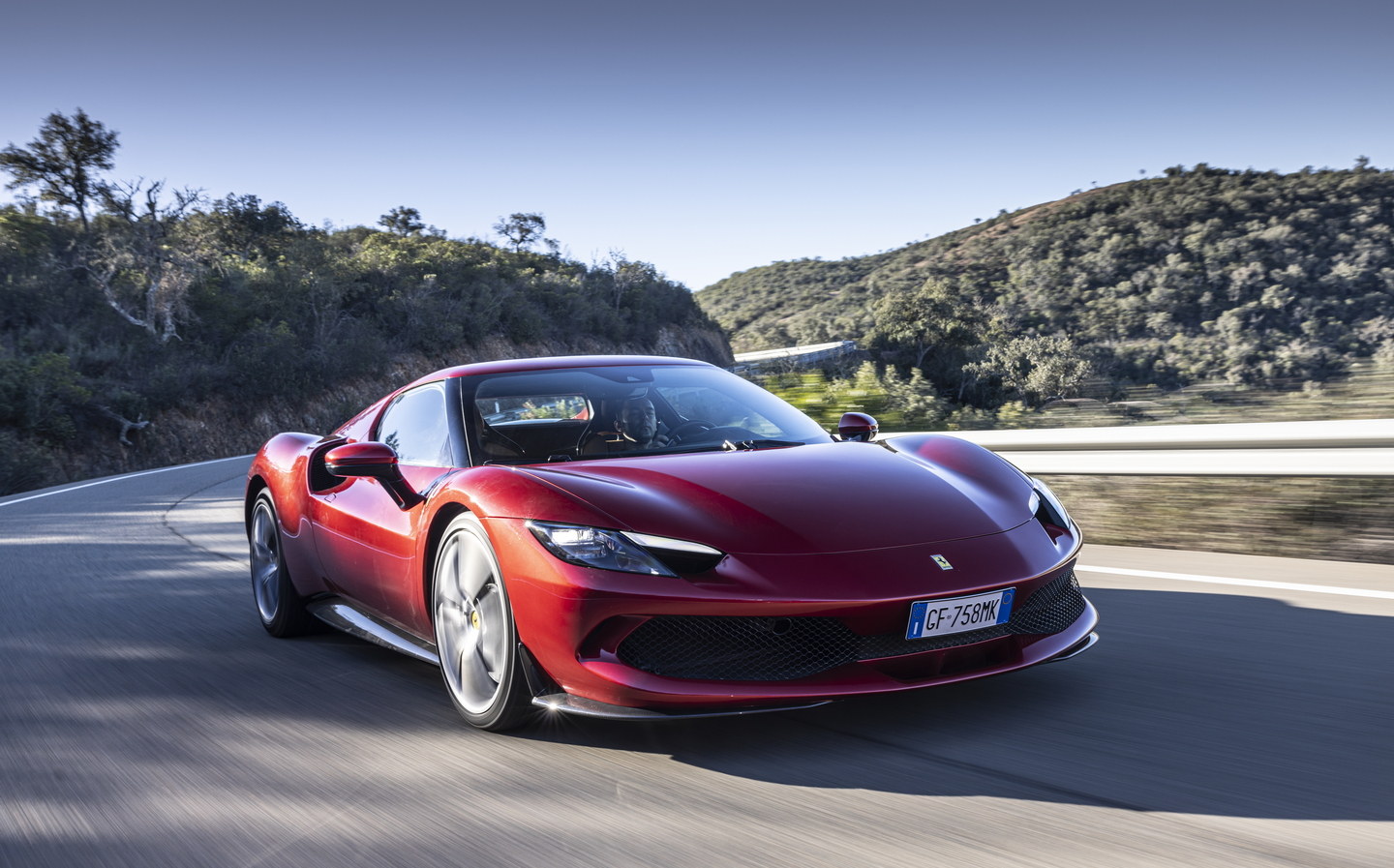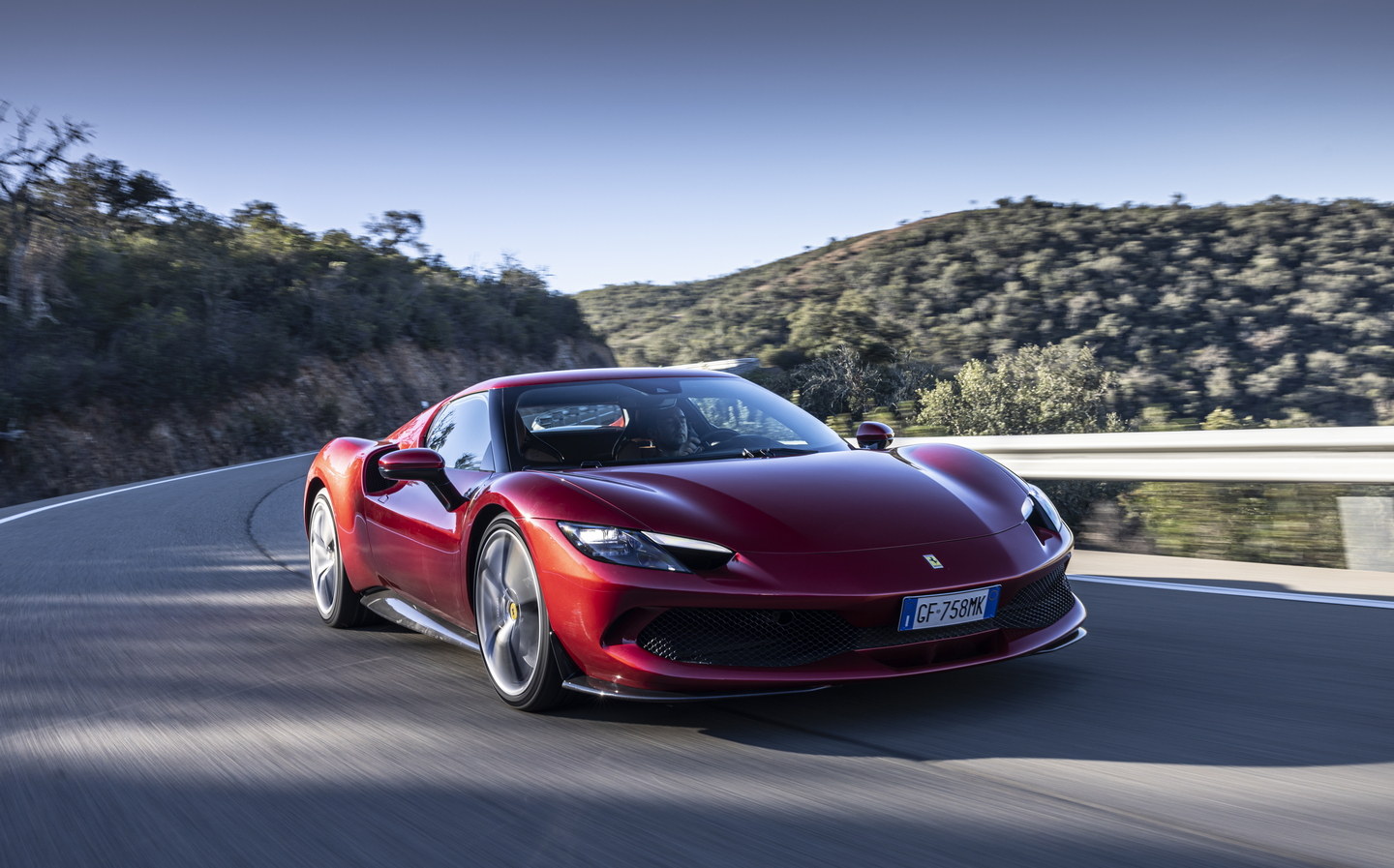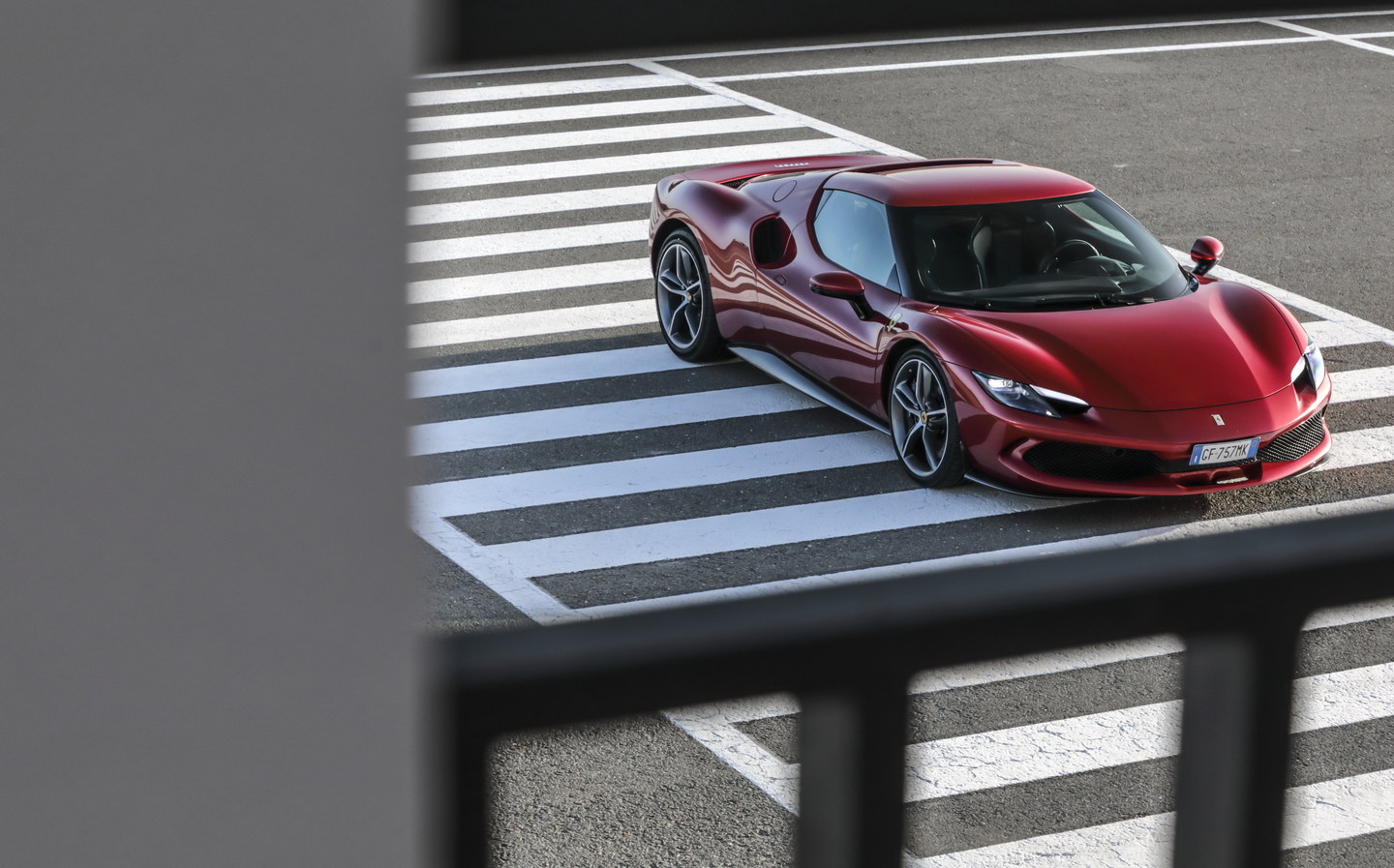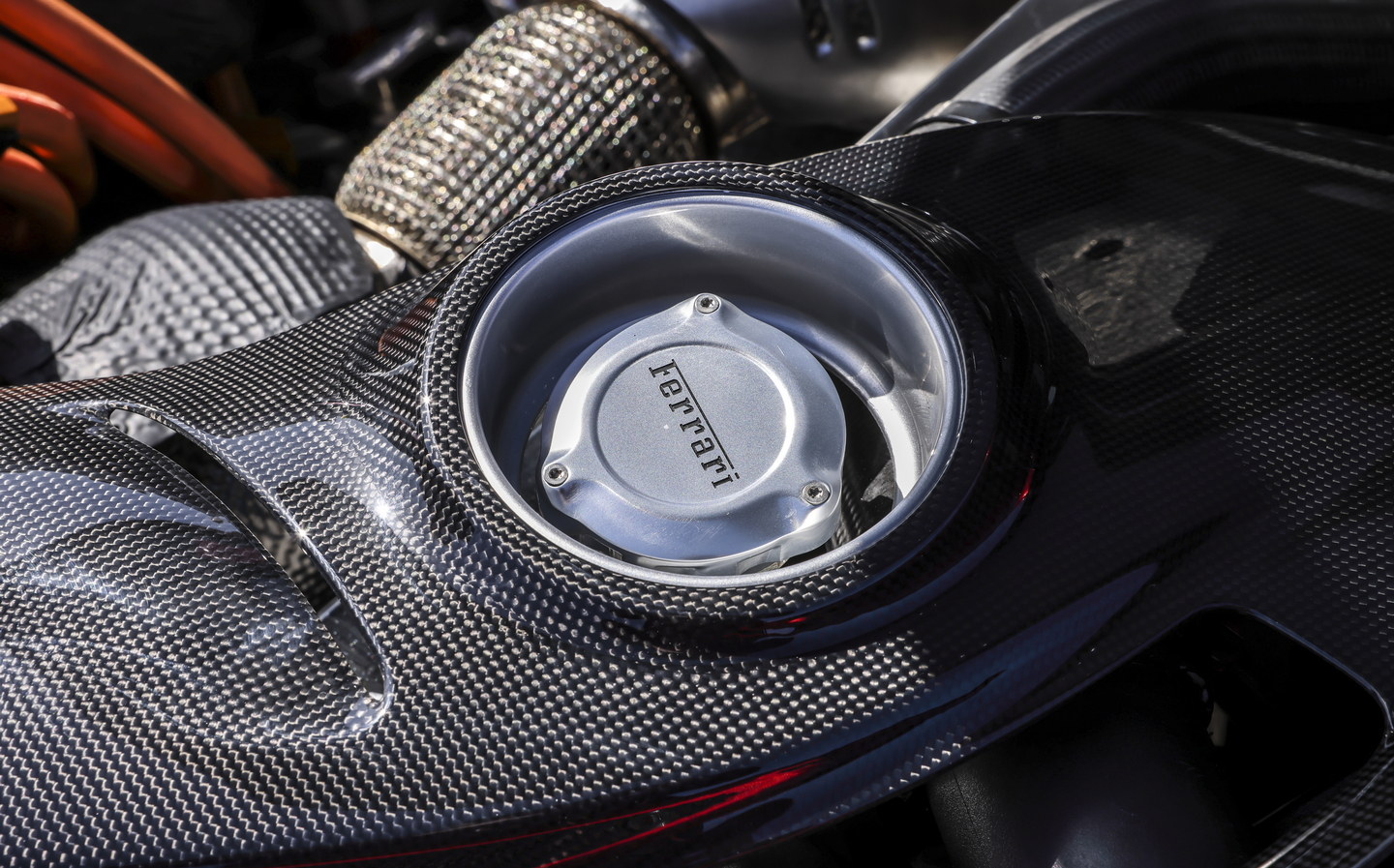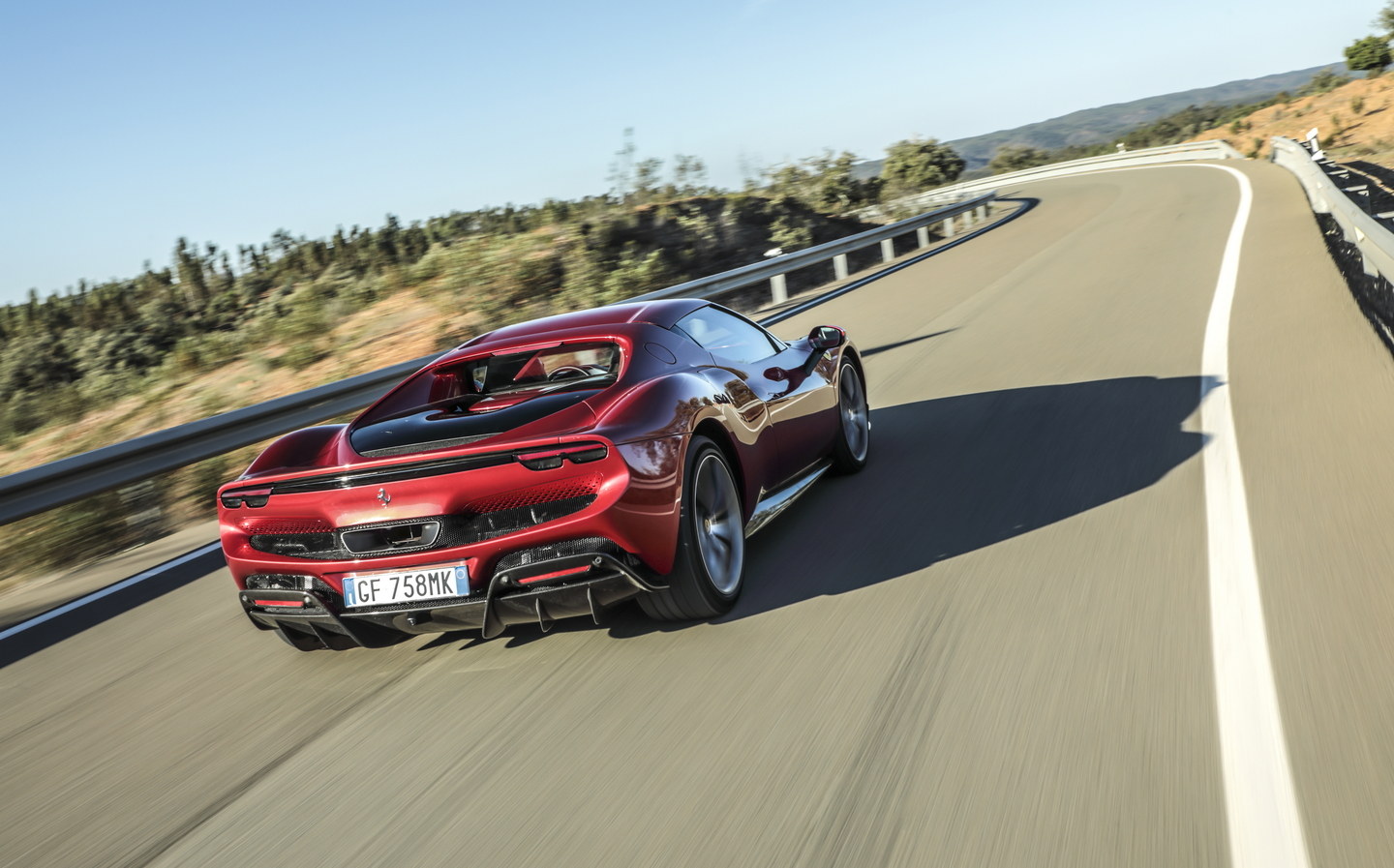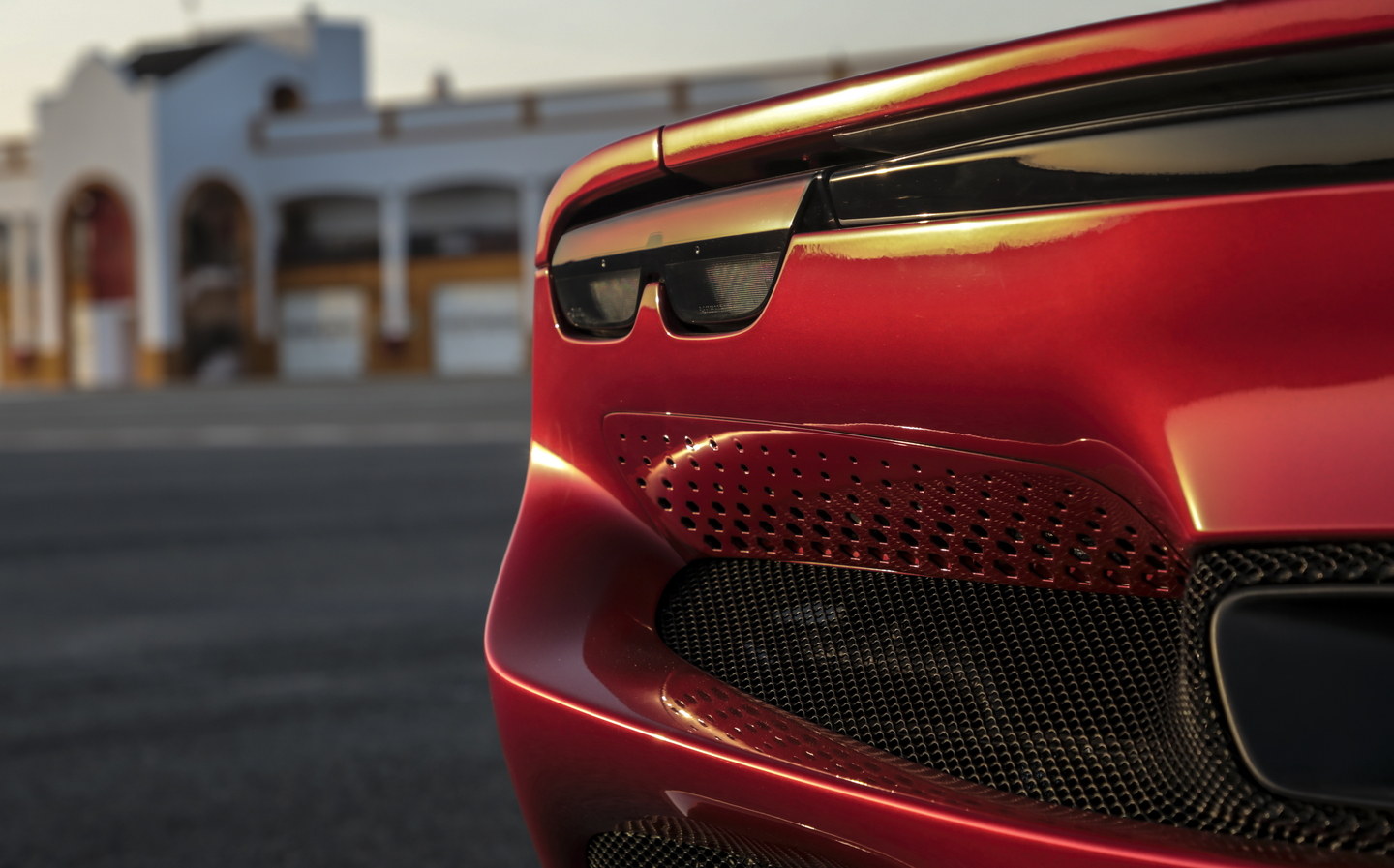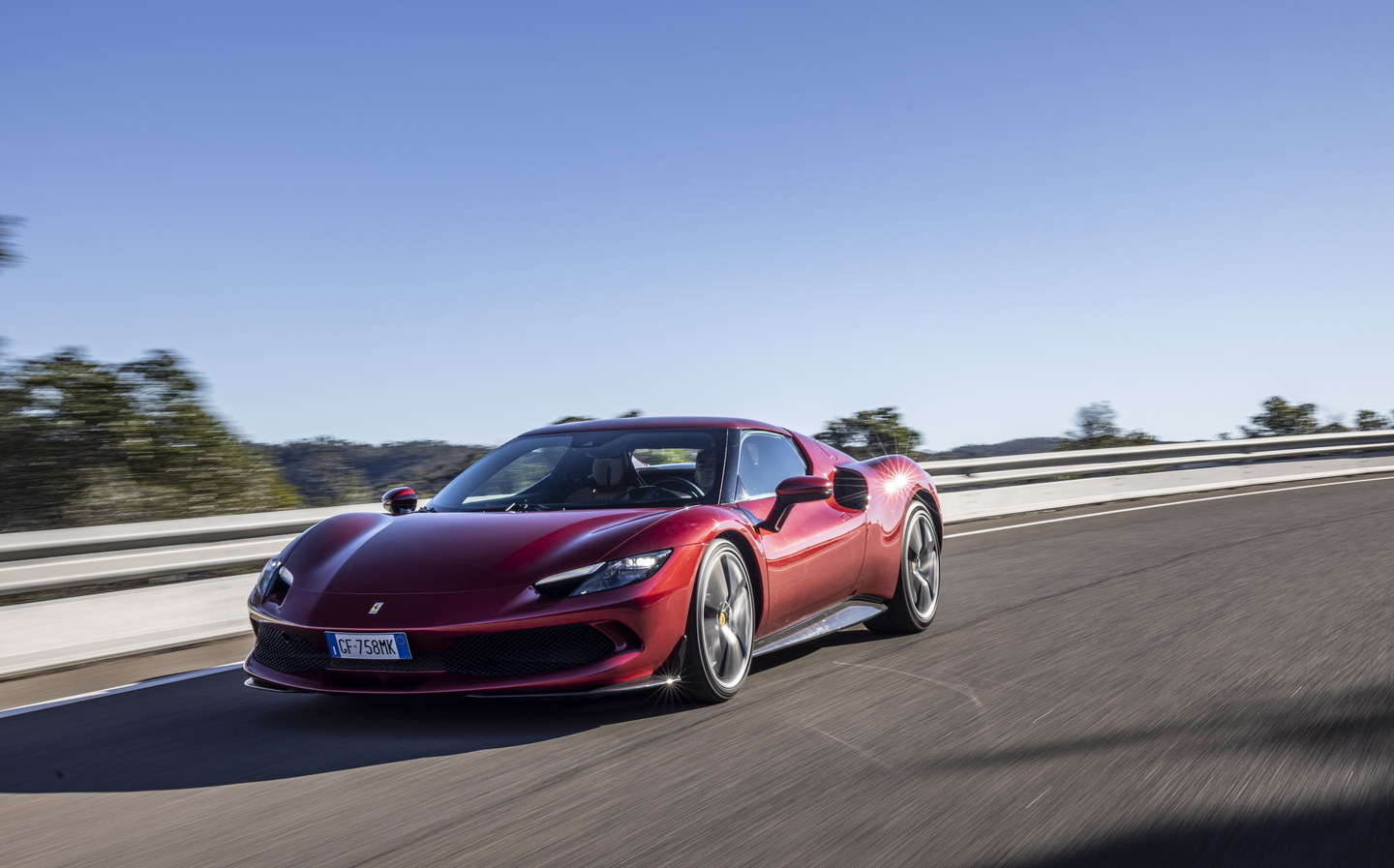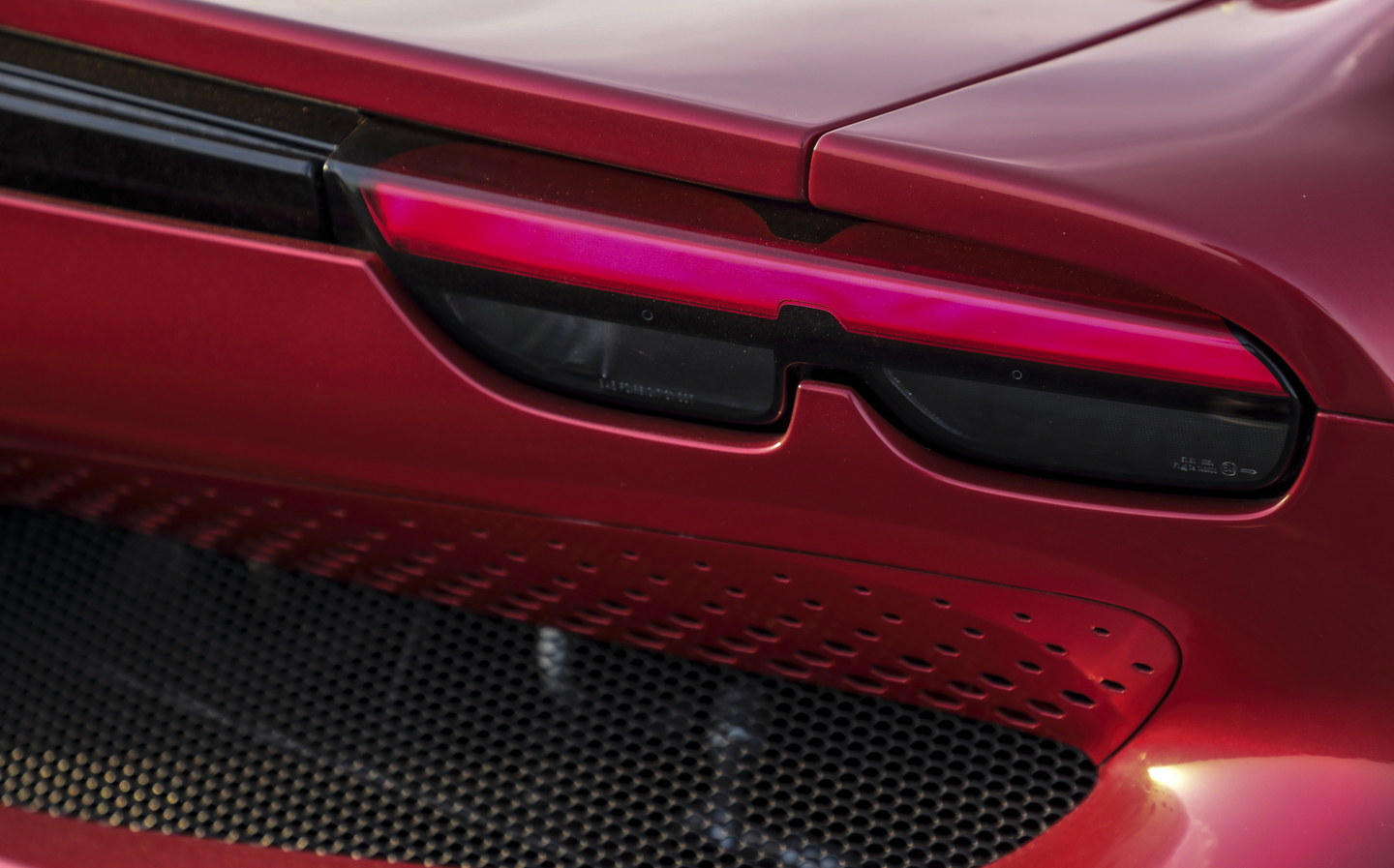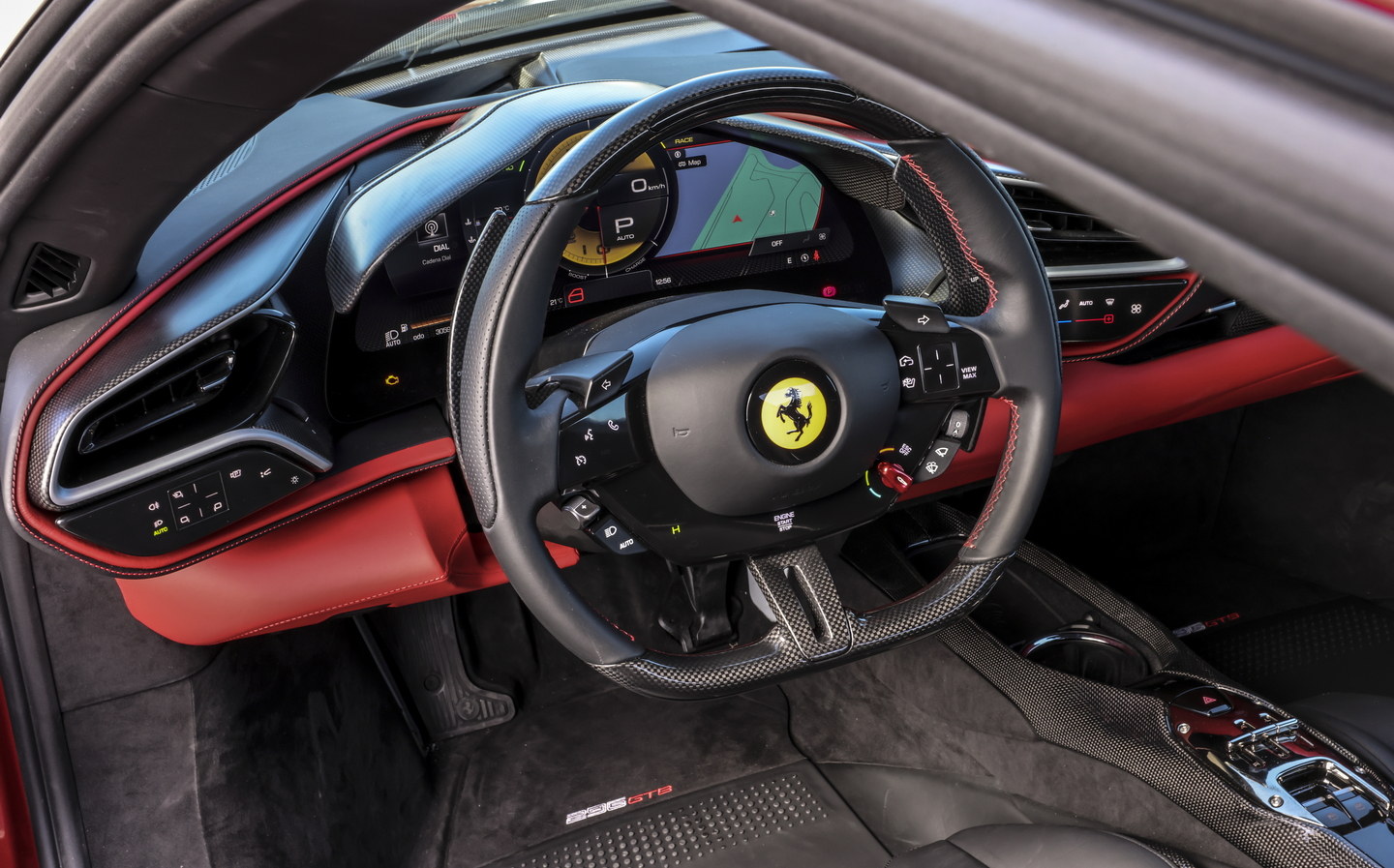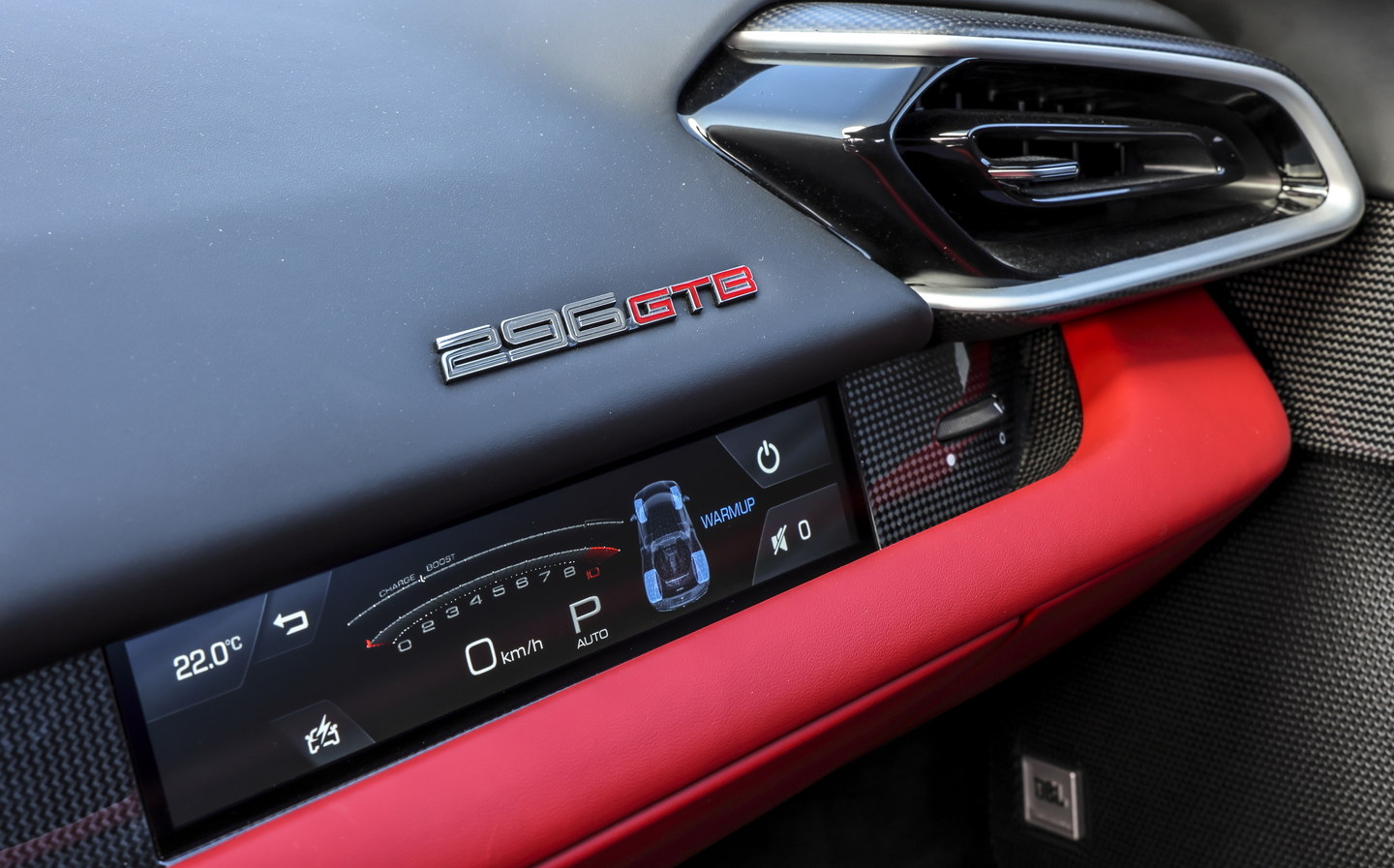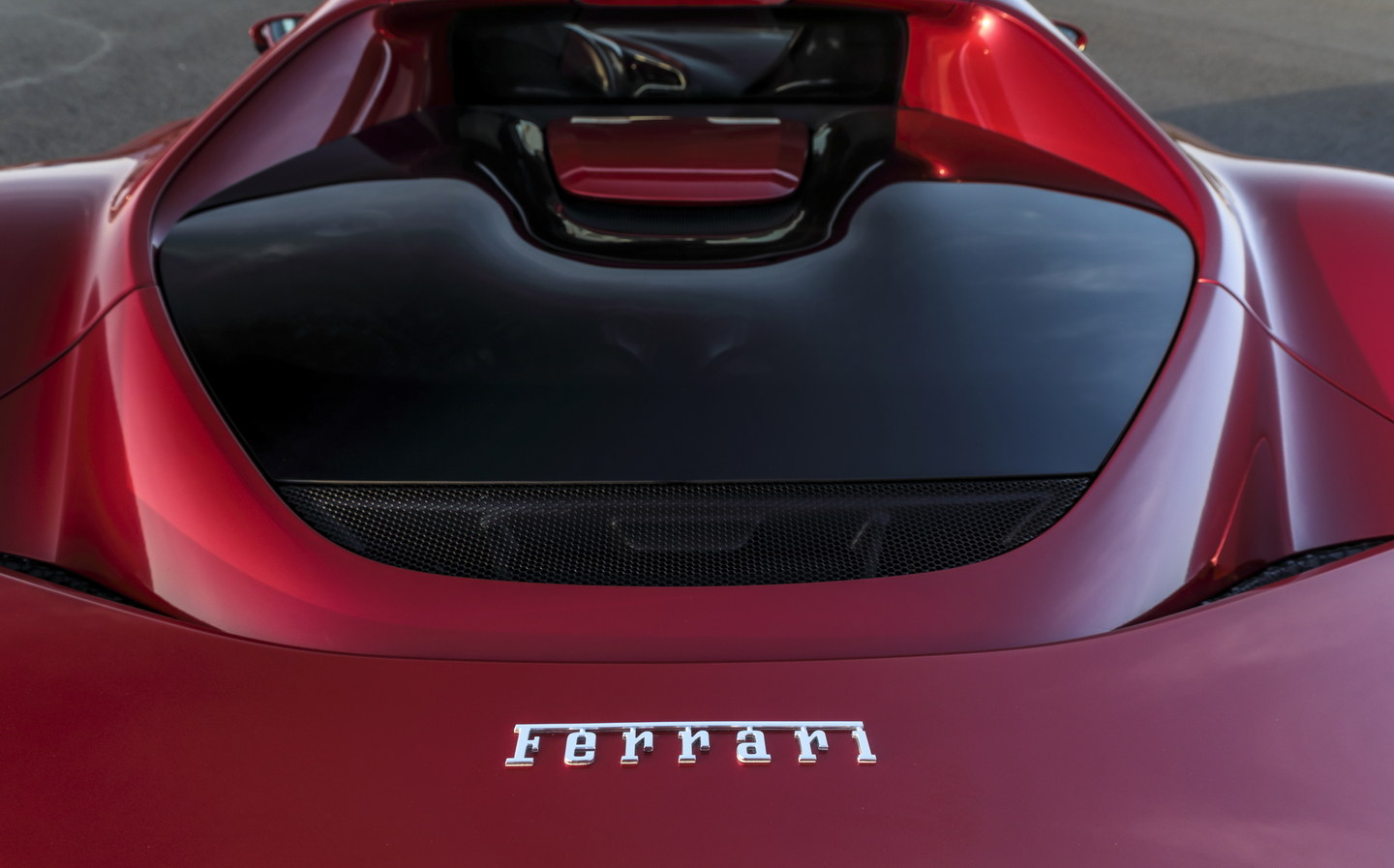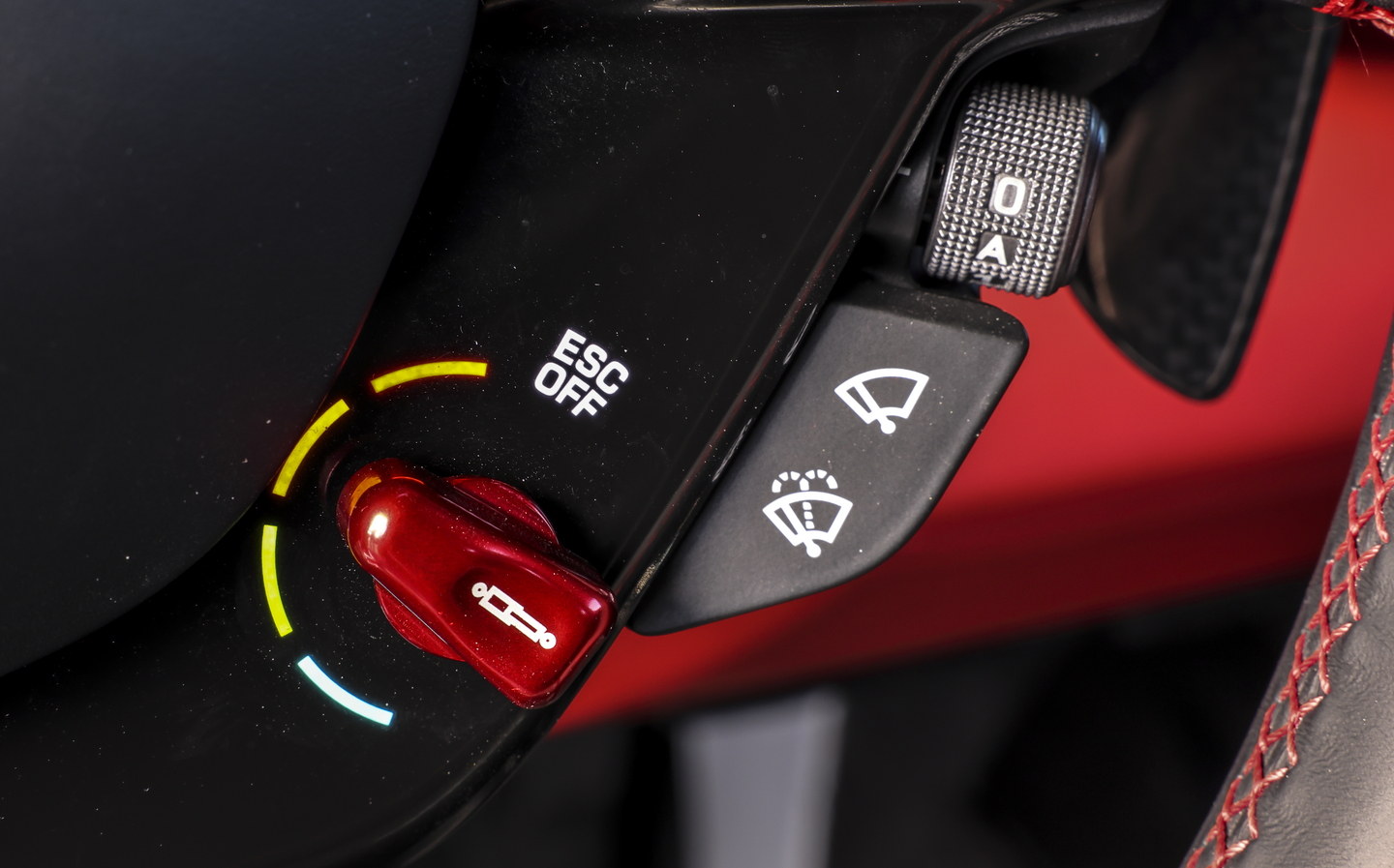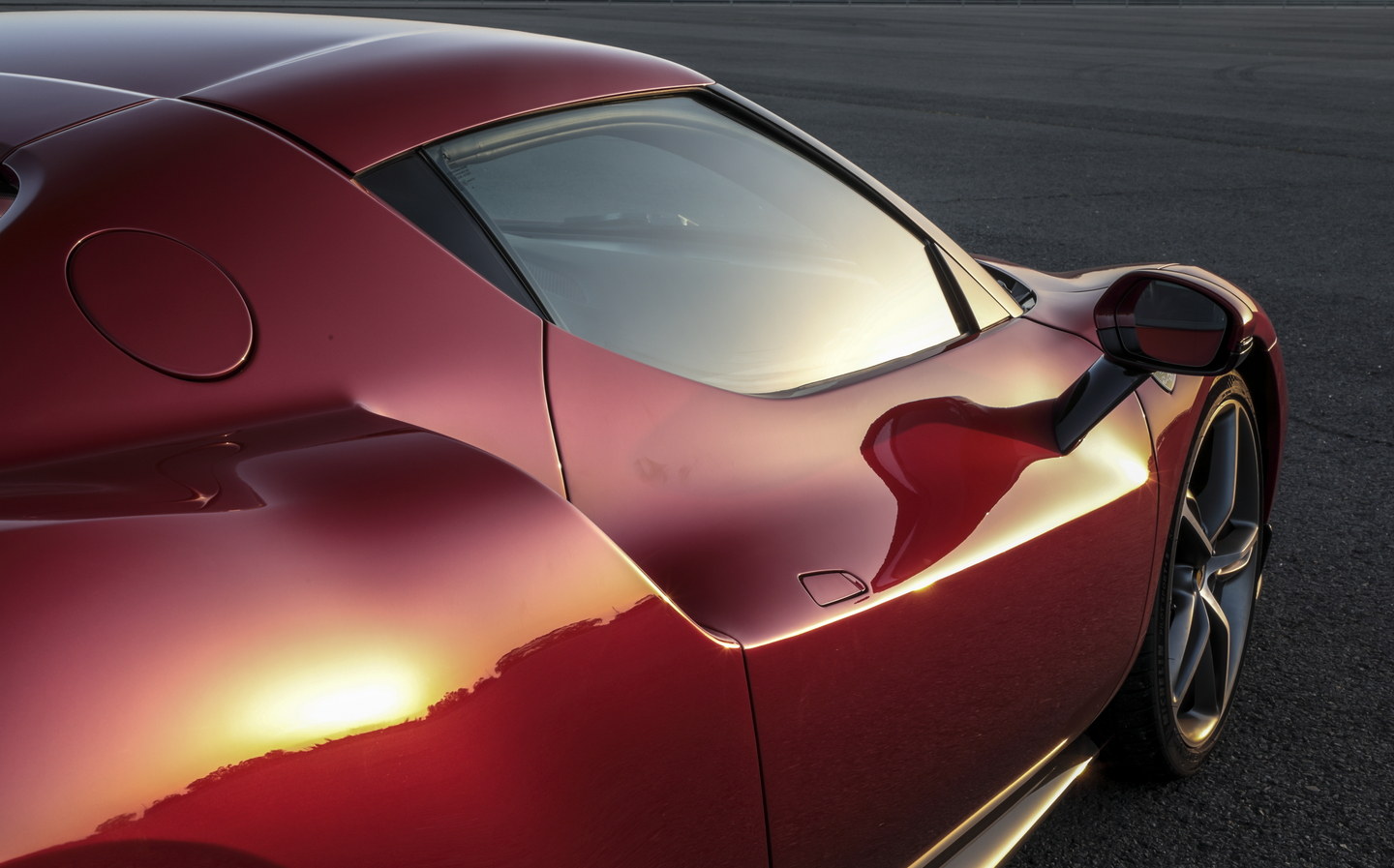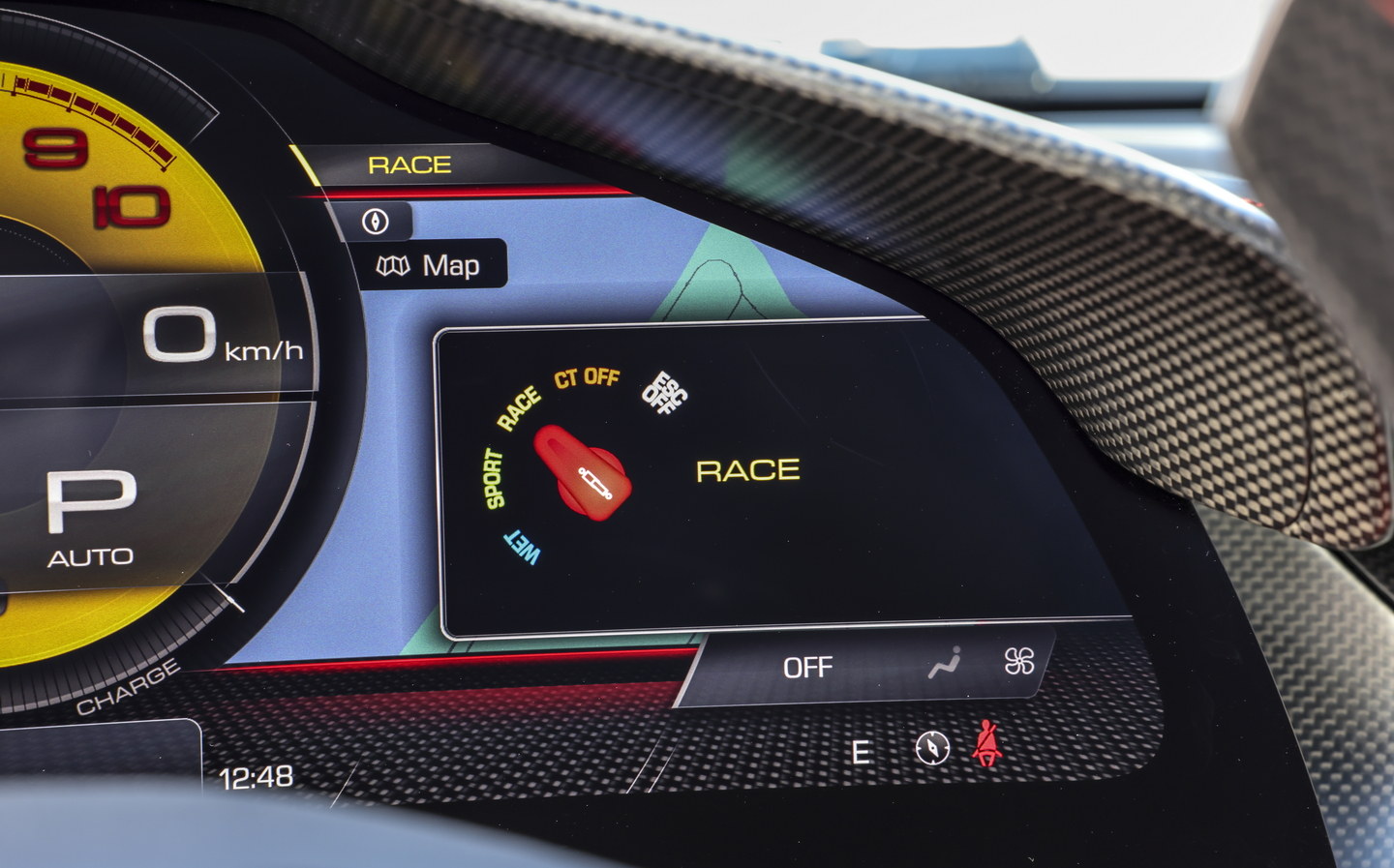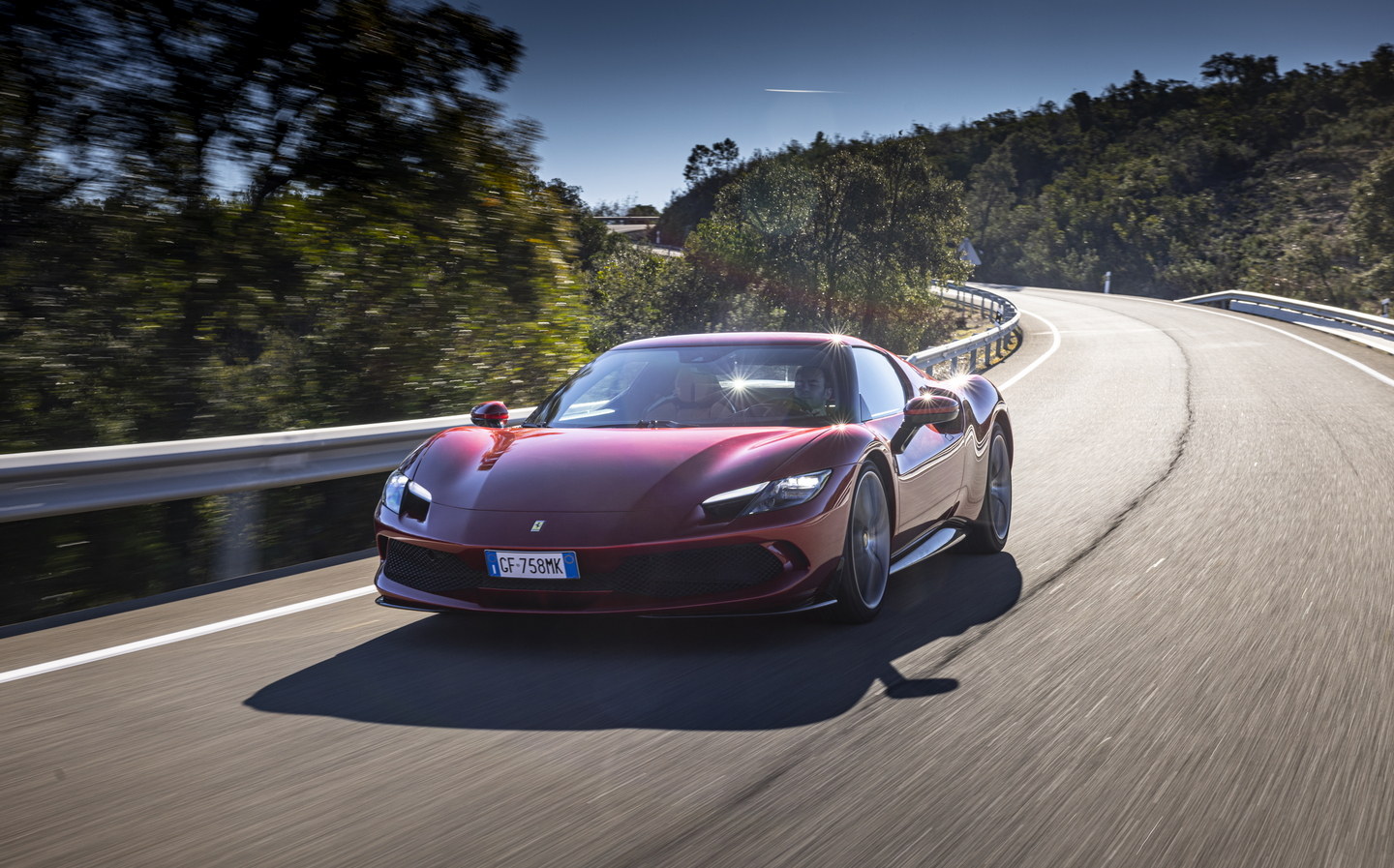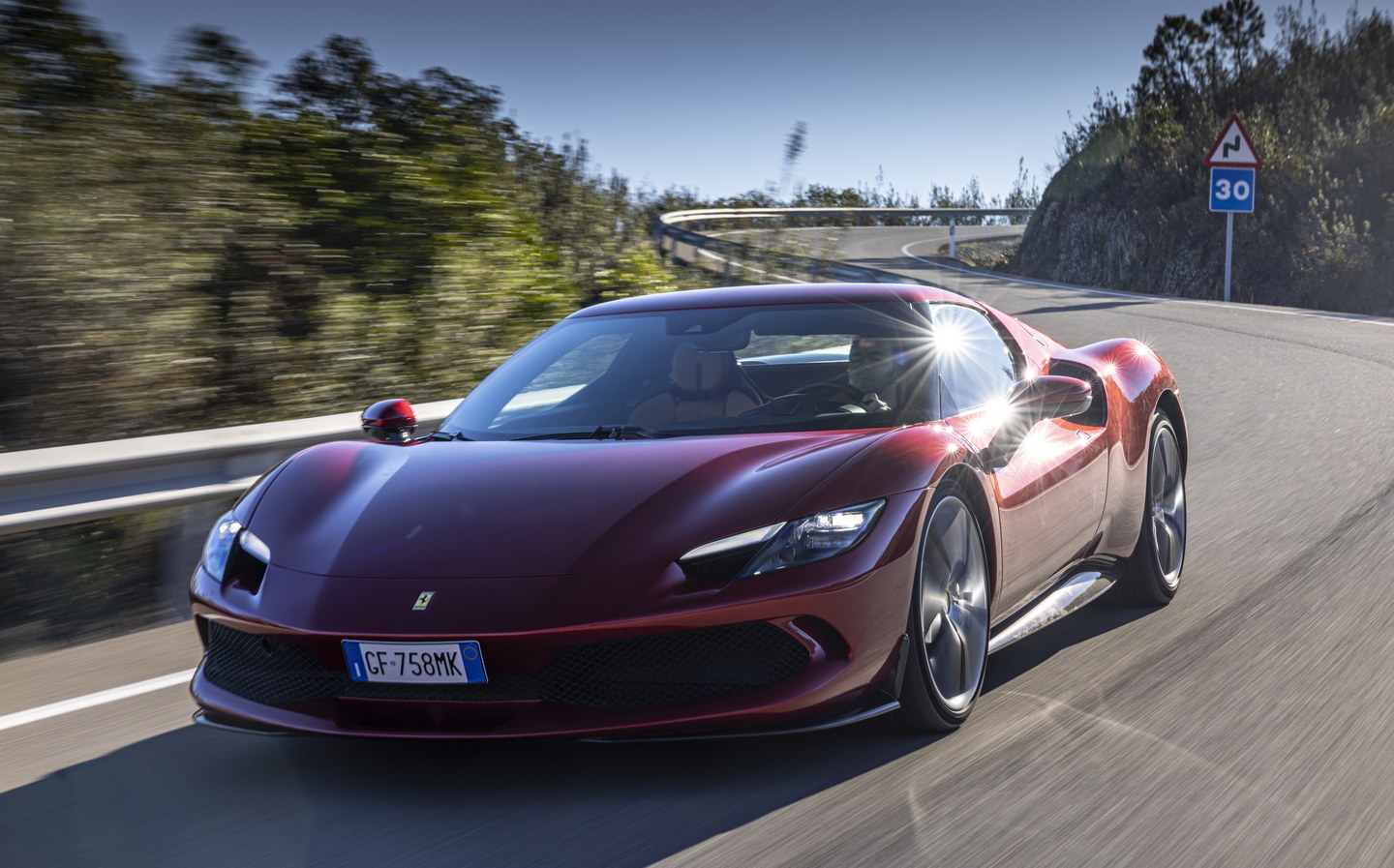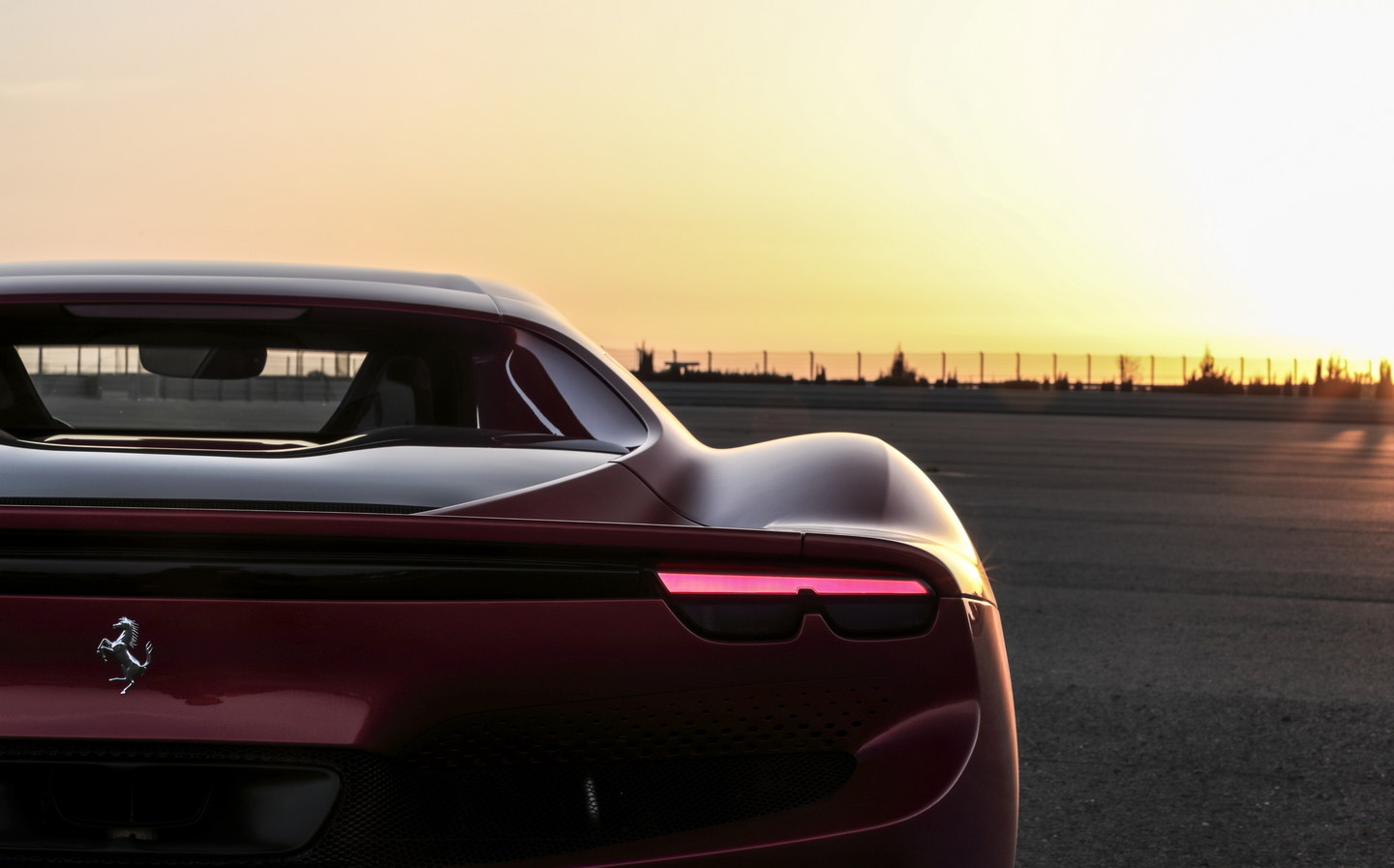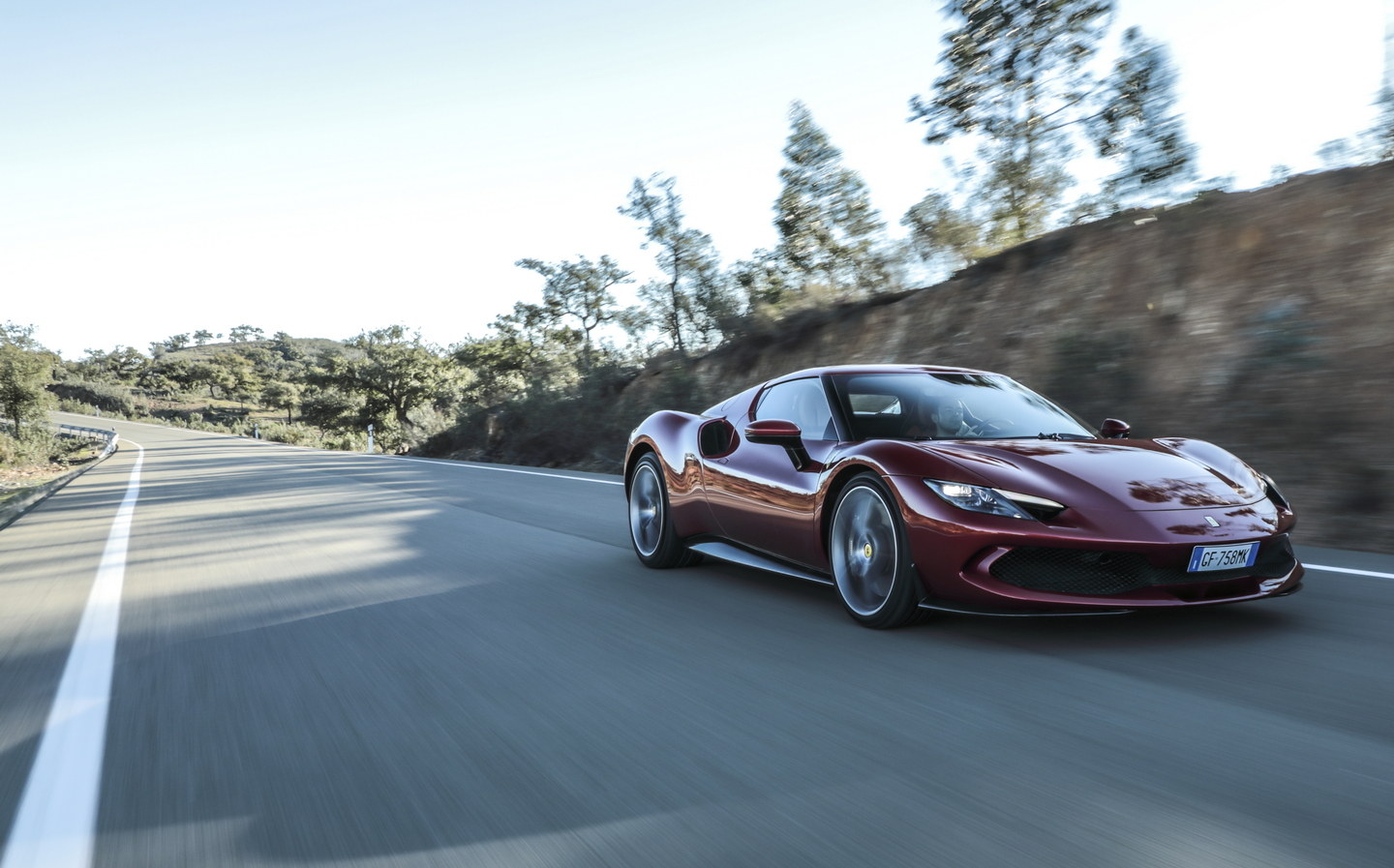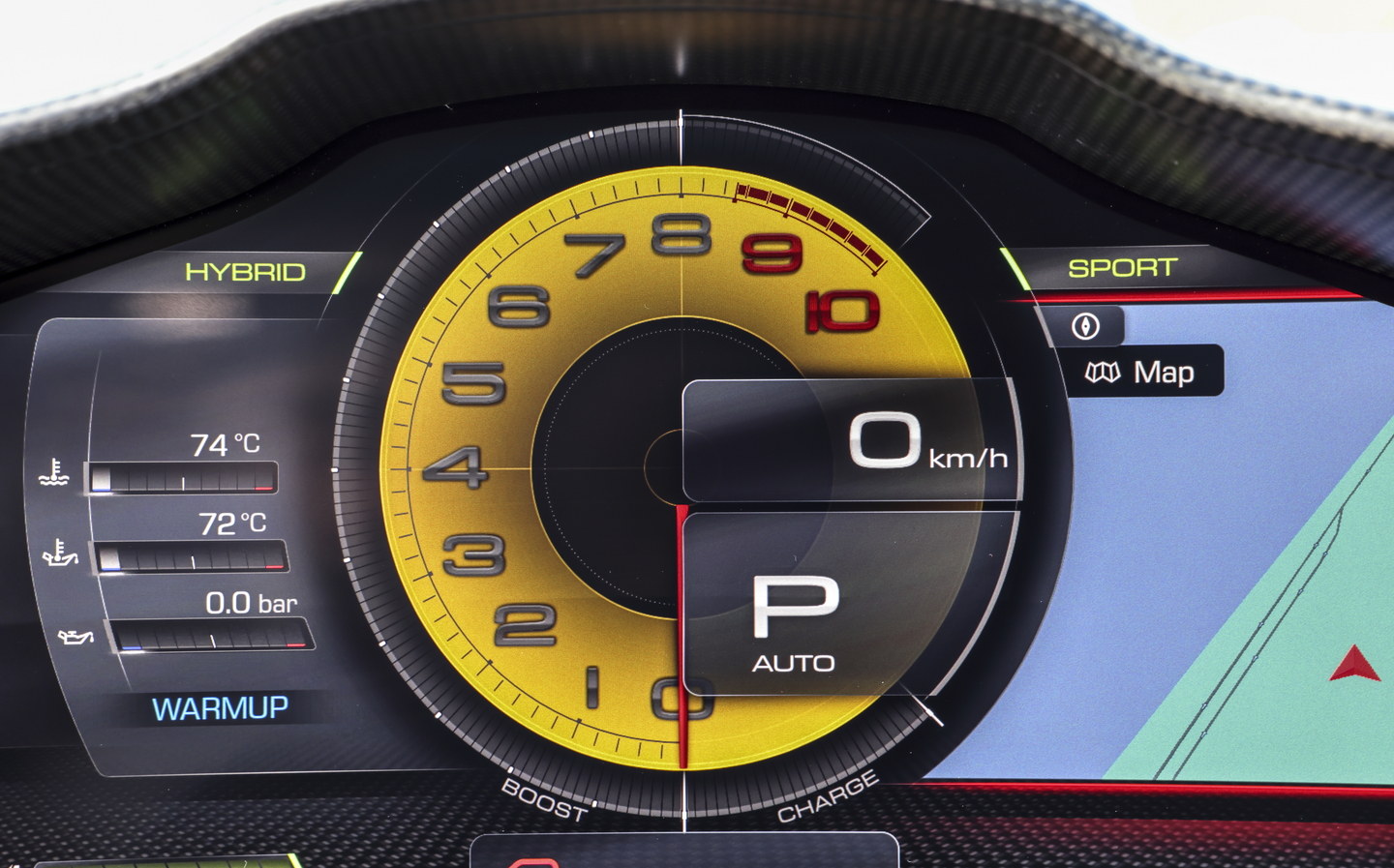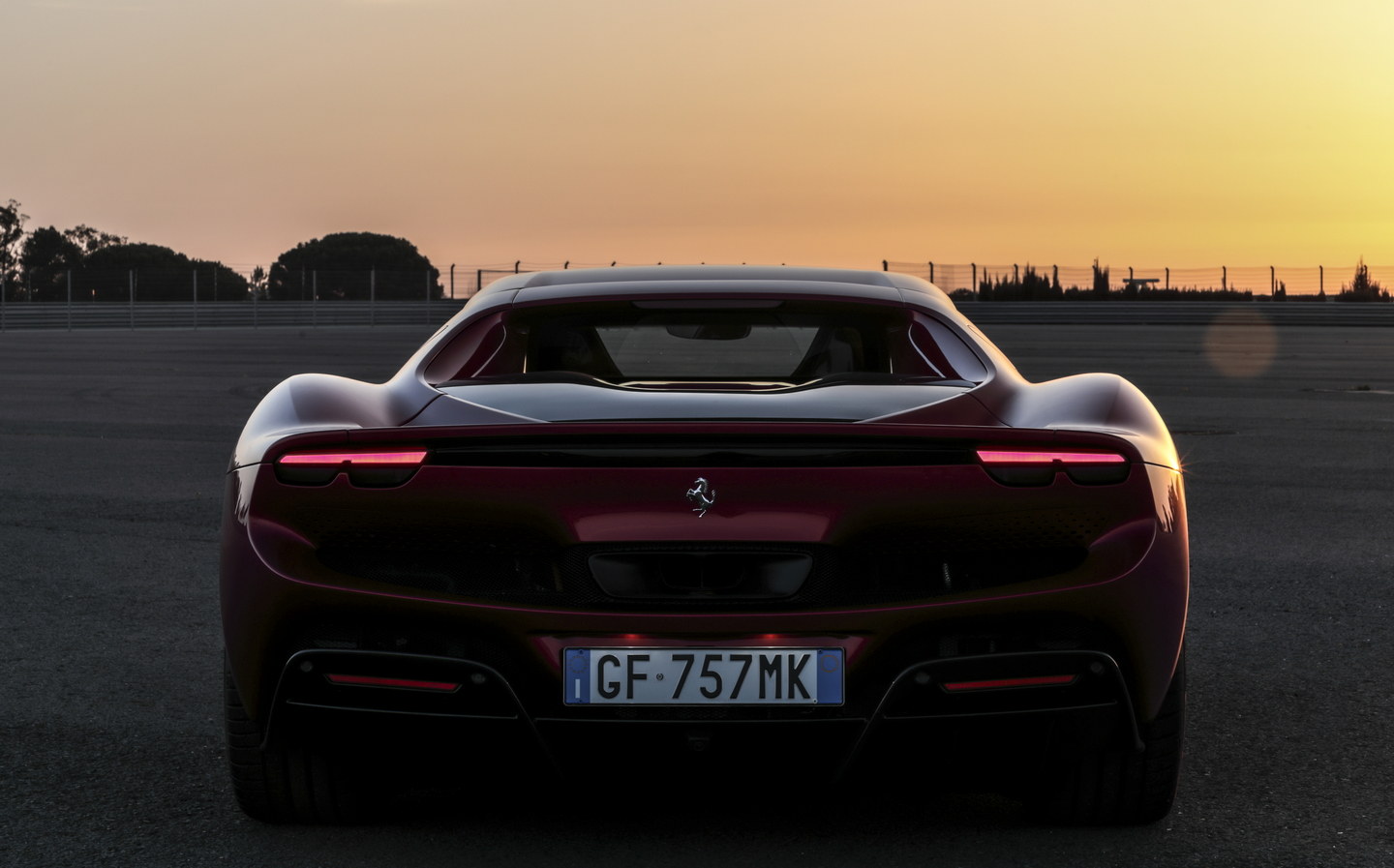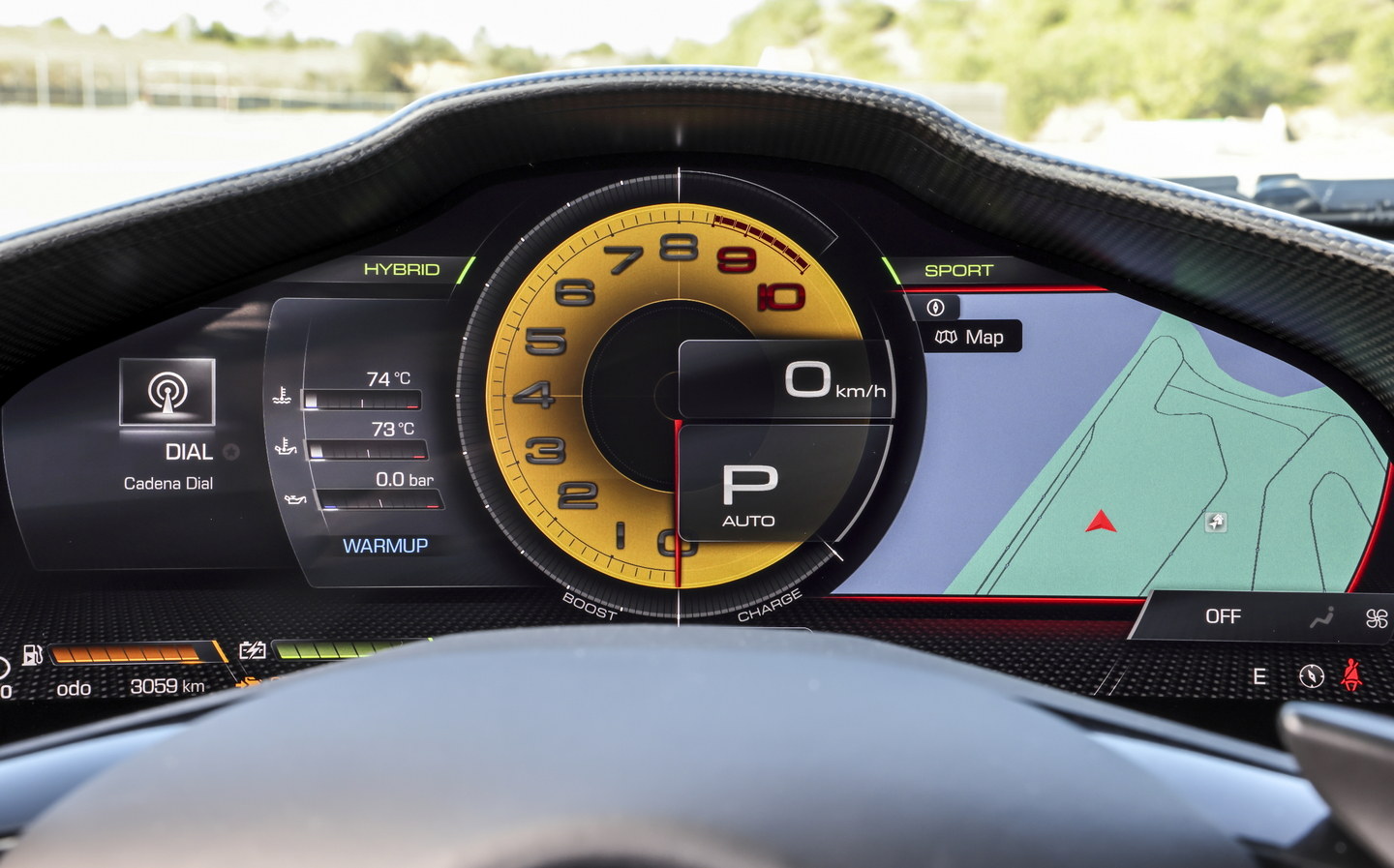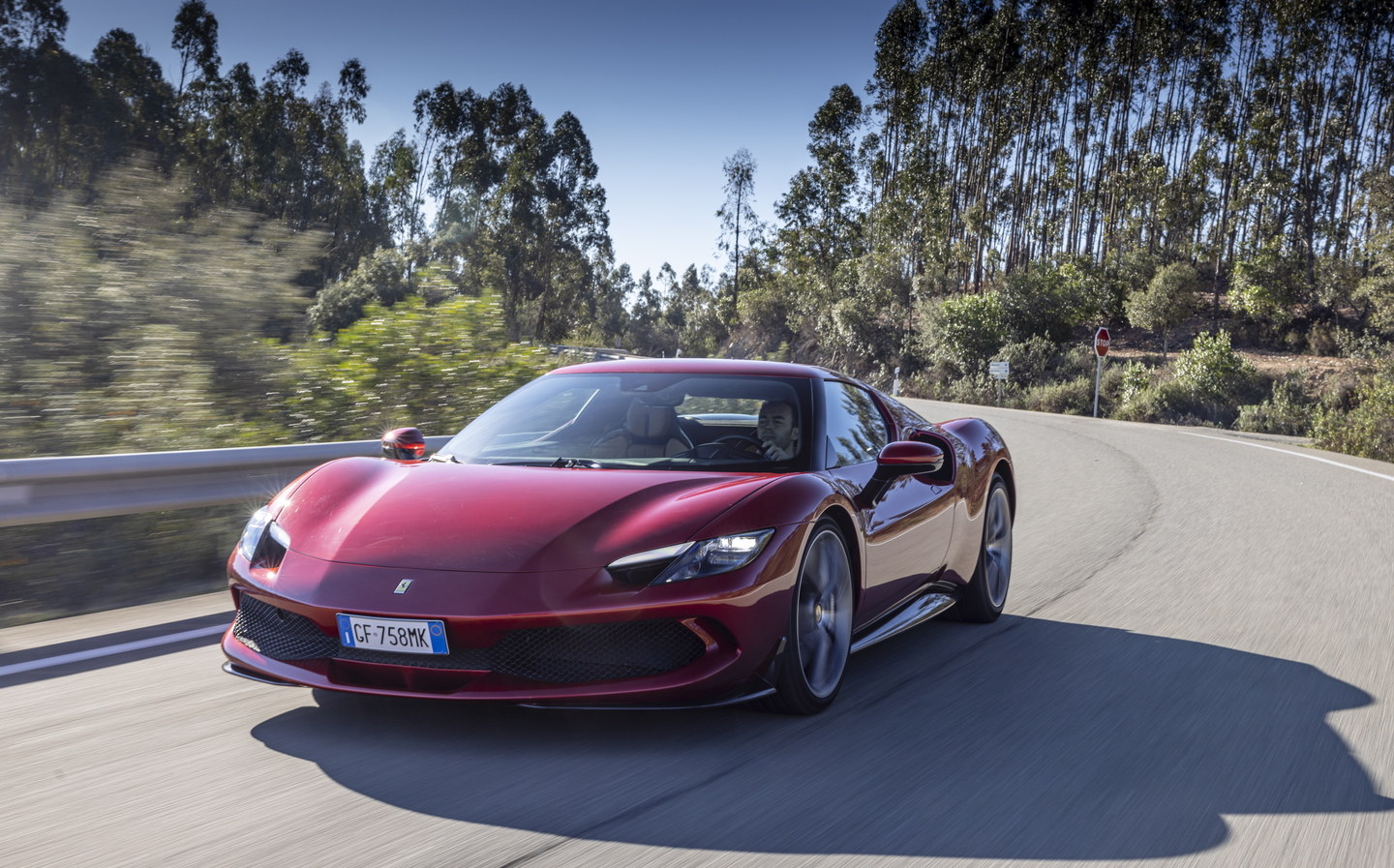Ferrari 296 GTB 2022 review: Prancing horse's V6 hybrid brings performance but also magic
Moving with the times has never been so good
Most car manufacturers steer well clear of building rivals for their own cars, but Ferrari is not a normal car company by any stretch of the imagination. So perhaps we shouldn’t be surprised that its latest supercar, the 296 GTB, is essentially a blue-on-blue (or should that be scarlet-on-scarlet?) attack on the Prancing Horse’s own F8 Tributo, albeit one with a twist.
You see, under that glorious bodywork, the Ferrari 296 GTB houses a closet full of dirty secrets. Not only has the new model replaced the V8 engine synonymous with mid-engined Ferrari sports cars with a 2.9-litre V6, but it has also made up for the cylinder shortfall with an electric motor.
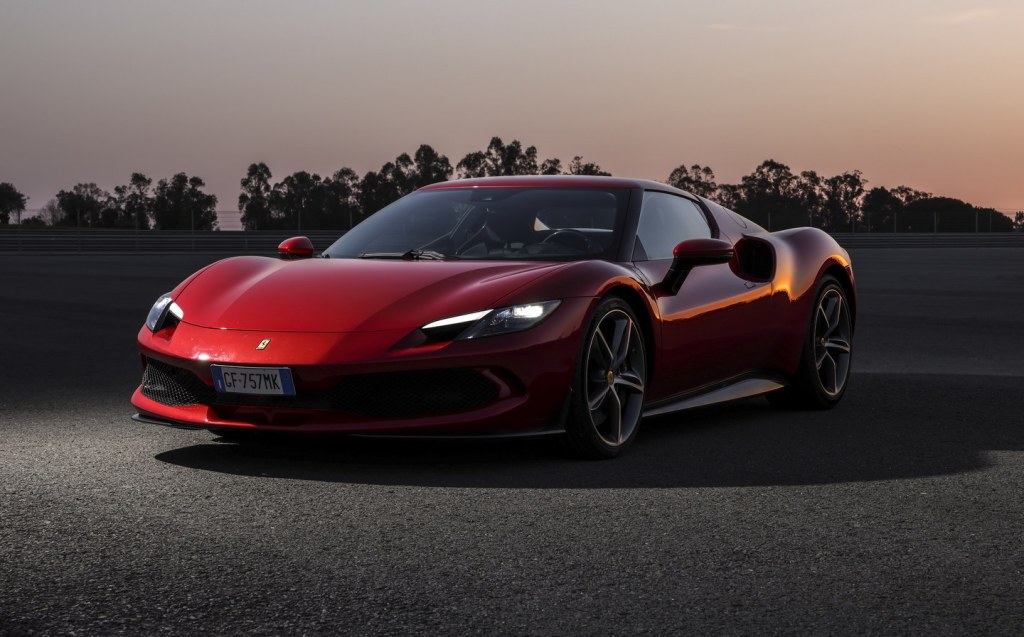
Fans of the brand need not panic, though. This is still a bona fide Ferrari; it just happens to be one with a seamlessly integrated plug-in hybrid system. Performance is still very much the name of the game, and the 296 GTB delivers that in spades. As well as being one of the Italian company’s most forward-thinking sports cars, it’s also (spoiler alert) one of the best.
Exterior design and rivals
There are beautiful cars, and then there’s the 296 GTB. Not only is this one of the most gorgeous Ferraris in recent years, but it’s also one of the prettiest cars to be launched in the past decade outright. It doesn’t matter from what angle you choose to view the 296; this thing looks glorious.
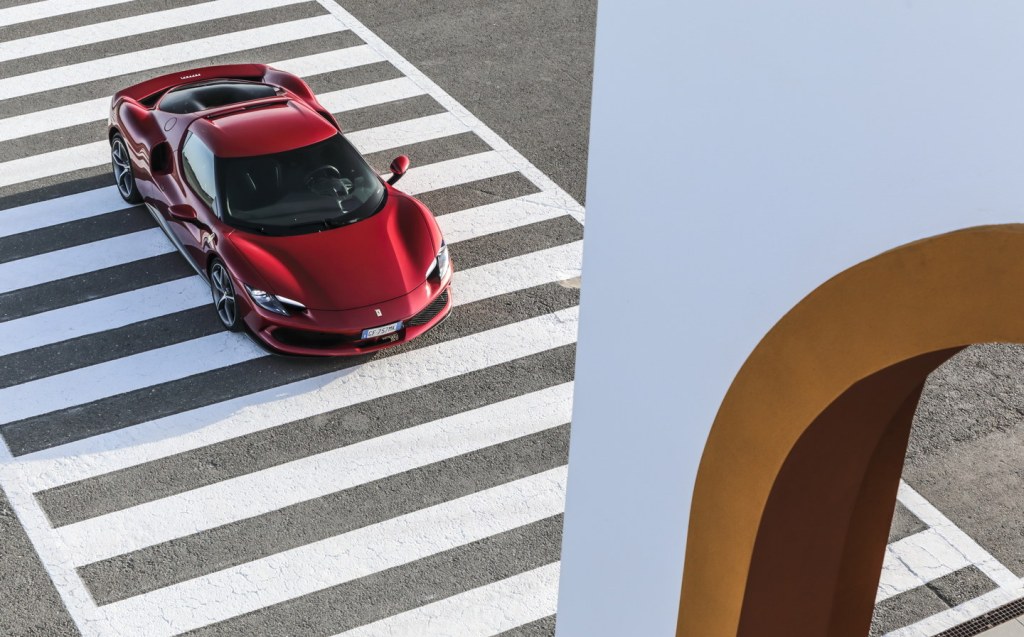
But as a supercar, the design must be about function as well as form. Important aerodynamic features have been merged into the bodywork, such as two air intakes built into the headlight clusters and an air duct within the lower bumper. That channels air under the car and towards the rear diffuser, sucking the car down at speed and forcing the four Michelin Pilot Sport tyres into the ground.
Similarly, the air intakes behind the doors dictated the shape of those powerful haunches, while the main concession to design — the vertical rear window — necessitated a tweak to the roof that creates a “virtual panel” over the rear deck.
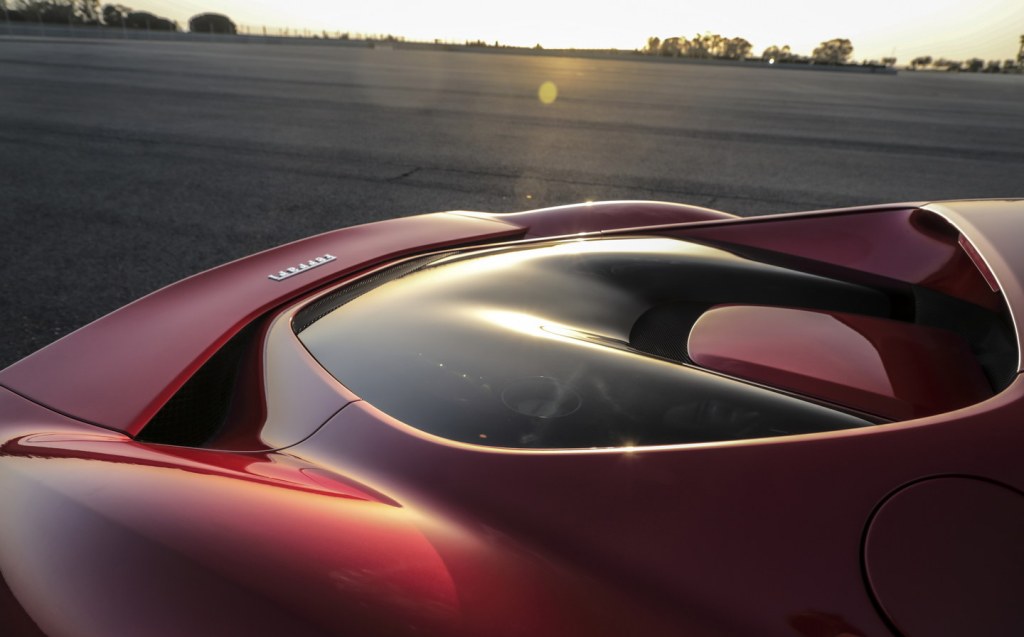
If you also consider the vortex generators under the floor and the active spoiler that extends from the car’s tail, then this car is no longer a work of art, but a very technical exercise in air management.
Of course, the same is true of cars such as the McLaren 720S and Honda NSX, but neither of those two cars has the same allure as the 296 GTB. The Ferrari badge obviously helps with that, but even if this shape wore a Dacia badge, it would still be one of the most enchanting supercars on the market.
Interior and practicality
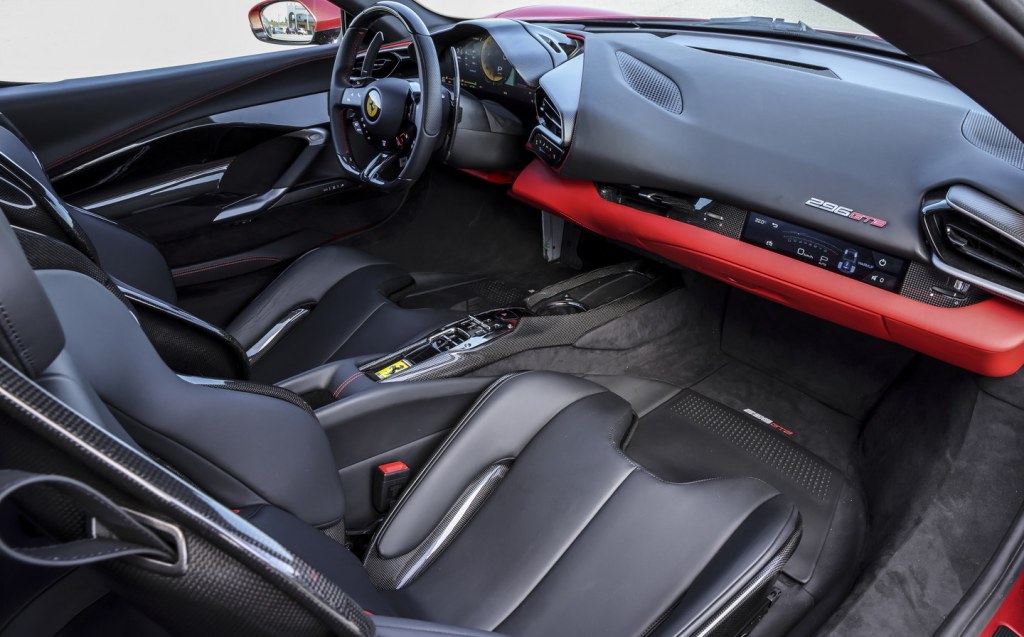
The interior is a special environment that gives out the necessary supercar vibes and looks spectacular, but it isn’t as ergonomically well-sorted as a McLaren 720S’s or an Audi R8’s. Everything is orientated towards the driver, but most of the switchgear has been heaped onto the steering wheel. Except, when we say switchgear, we mean touch-sensitive ‘haptic’ controls, which have more or less completely replaced conventional buttons in the car.
Where buttons do exist, they’re hardly the ones you want. Ferrari has continued its campaign against steering column stalks, which means the indicators are controlled using two plastic thumb switches on the steering wheel. They aren’t too bad when the wheel is vaguely straight, but if it’s turned through more than 180 degrees, it requires a little thought to remember which button is which.
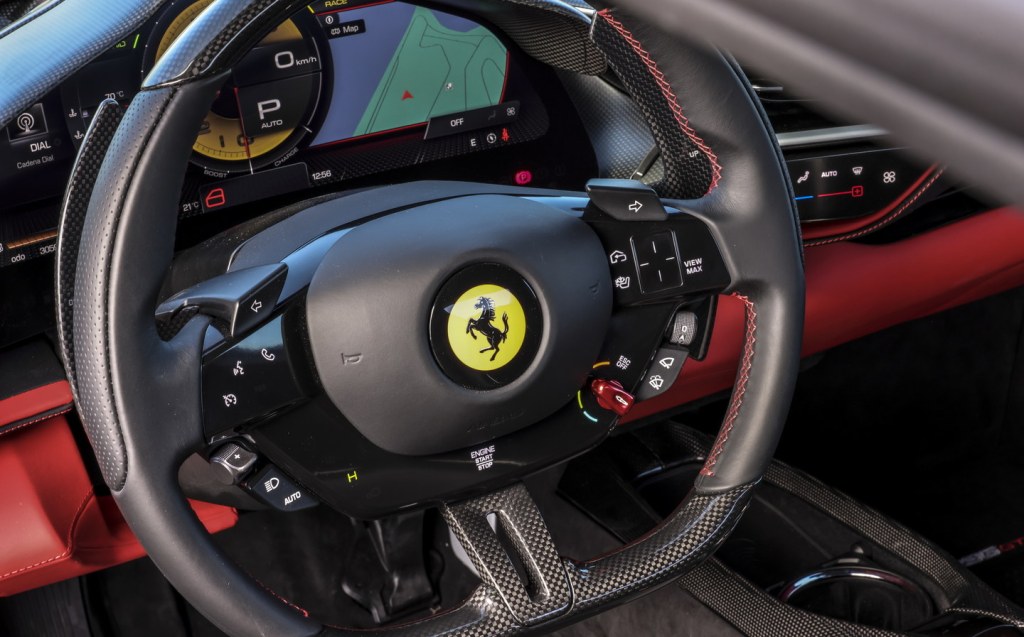
This is all part of the company’s desire to inject Formula One DNA into its road cars, and while it adds a little occasion to the 296 experience, it is still an annoyance in day-to-day use.
Yet Ferrari hasn’t entirely given up on the practical stuff. The brand’s build quality has improved in the past decade, and the 296 feels really very solid. It may have Italian looks but it has German robustness, which is the ultimate combo.
It also has a sizeable 201-litre luggage bay between the front wheels, providing a sensible amount of space for a car of this type.
Technology and safety
The digital instrument cluster is a particular triumph, with lots of customisation options and a clear display. Perhaps it isn’t as clean as the Virtual Cockpit system in the Audi R8, and it certainly isn’t as easy to control, but it’s a good effort and brings Ferrari bang up to date.
The fact that it looks impressive and is well laid out is important because it’s the only screen accessible to the driver.
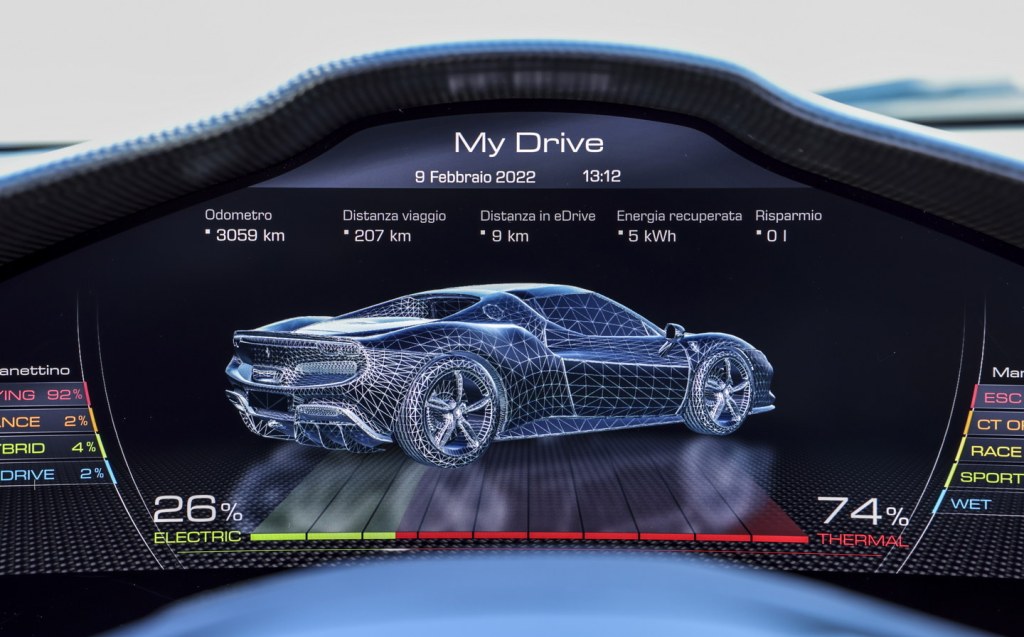
Unfortunately, its controls fall short. The 296 GTB features laptop-style touchpads on the steering wheel, along with haptic controls that prove sluggish when you want them to work quickly and irritatingly sensitive when you don’t mean to touch them at all. Were they just controlling the screen, it wouldn’t be so bad, but they’re tasked with marshalling the climate control, lights and even the hybrid system driving modes. It isn’t ideal.
The 296 GTB is also offered with a second screen — a touch-sensitive one — that fits into the dashboard in front of the passenger. More intuitive than the driver’s screen, it’s a handy way of allowing the passenger to access information and infotainment systems, but it’s too out-of-the-way to be a distraction or a help to the driver.
Performance, power output and acceleration
The plug-in hybrid system is not quite a first for Ferrari – the SF90 Stradale pioneered that particular technology – but the 296 GTB has a unique propulsion system. Combining a 654bhp V6 petrol engine with a 164bhp electric motor, it’s an 818bhp, rear-wheel-drive supercar that’s capable of 0-62mph in 2.9 seconds, and it’ll keep accelerating until the speedo passes 205mph.
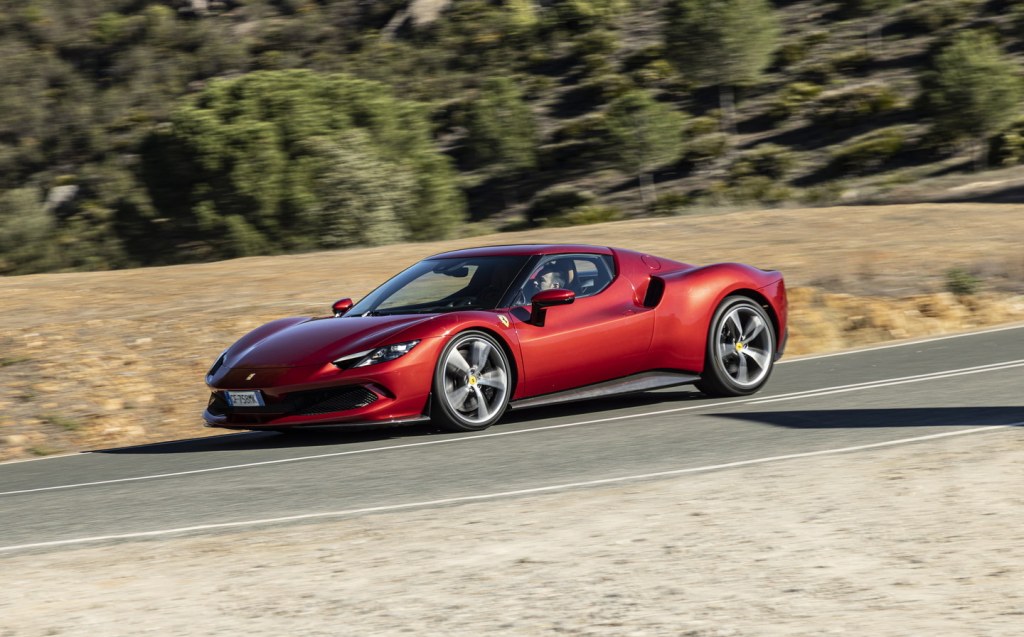
With headline figures like that, it won’t be a surprise to learn the 296 GTB’s hybrid system does not aim to save the planet. It is naturally more economical and less polluting than most cars in its class, but the rechargeable battery has an energy capacity of just 7.45kWh, giving the car an electric range of just 15.5 miles. In a world where most plug-in hybrids manage 30-something miles on the official economy test, that’ll be a bit disappointing for the Green Party.
But the Ferrari hybrid system is really about performance, using F1-inspired technology to ensure the newcomer is not just fast in a straight line, but in the corners, too.
A clever e-manettino drive select system tells the electric motor how to behave, with modes for zero-emission driving, efficient use of both motors and a performance-orientated setting that uses both motors together. There’s also a ‘Qualifying’ mode that provides maximum performance for a short time only, helping to give the driver optimum performance over one lap of a track.
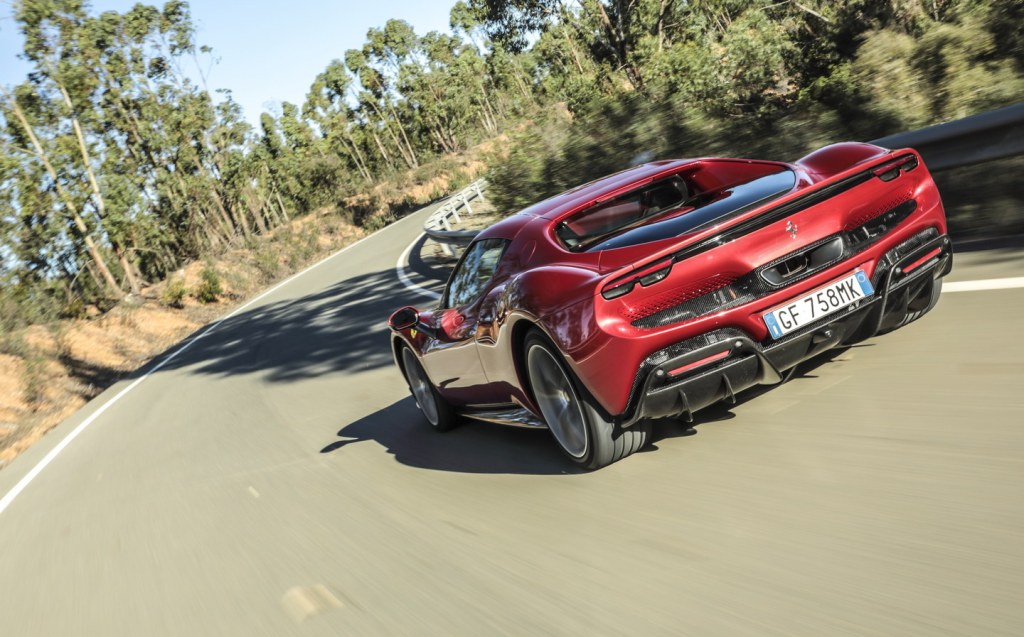
Yet the most impressive thing is not the engineering, the technology or the power on show, but the way in which it all works together.
Opt for the Performance or Qualifying modes and you’d never know there was an electric motor hiding between the engine and gearbox. It just feels like a massive, meaty and supremely powerful petrol engine, and it sounds like one, too.
Ferrari calls this engine the “little V12”, and though that seems a bit generous, the 296 GTB certainly doesn’t miss the V8 engine of the F8 Tributo. It howls balefully through the rev range, and it even produces the vibrations of an old-school eight-cylinder.
Ride and handling
When Ferrari launches a mid-engined supercar, you expect it to drive well, but nobody expected the 296 to be this good, especially because it comes with a hybrid system. When it comes to cornering, Ferrari’s aim here was to put smiles on its customers faces, and they nailed it.
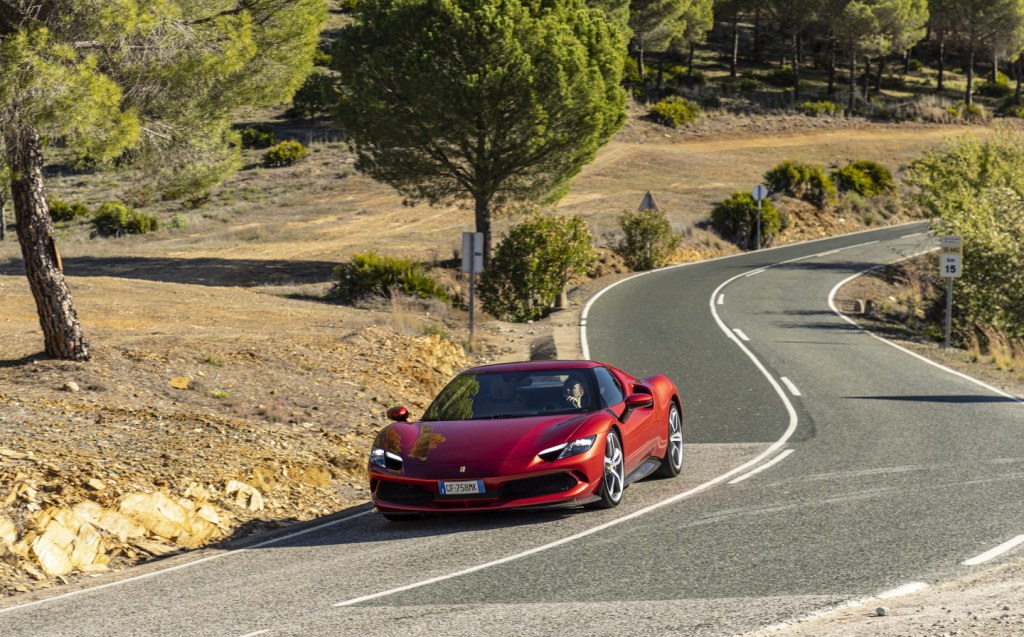
It’s difficult to explore the car’s limits on a road because the limits are just so far beyond the bounds of legality, but on a race track it comes alive.
The brakes are electonically controlled – there’s no mechanical connection to the callipers – but they feel surprisingly natural and offer immense stopping power. Similarly, the power steering is electrically assisted – something McLaren has largely shunned for lacking feel – but it too feels fluid, responsive and informative.
Ferrari says this car is built to “attack” corners, encouraging late braking and punchy use of the throttle and steering. That shines through on a racetrack, where the 296 can stand up to astonishing levels of tomfoolery.
Chuck it into a corner and it doesn’t understeer – the purpose-built Michelin tyres simply cling to the asphalt even more tenaciously and the car does your bidding.
Of course, getting really over-exuberant will result in a little wash-out from the front end or a power slide at the rear, depending on whether you get ambitious with corner entry or exit speeds, but the electronic aids are there to help gather it up.
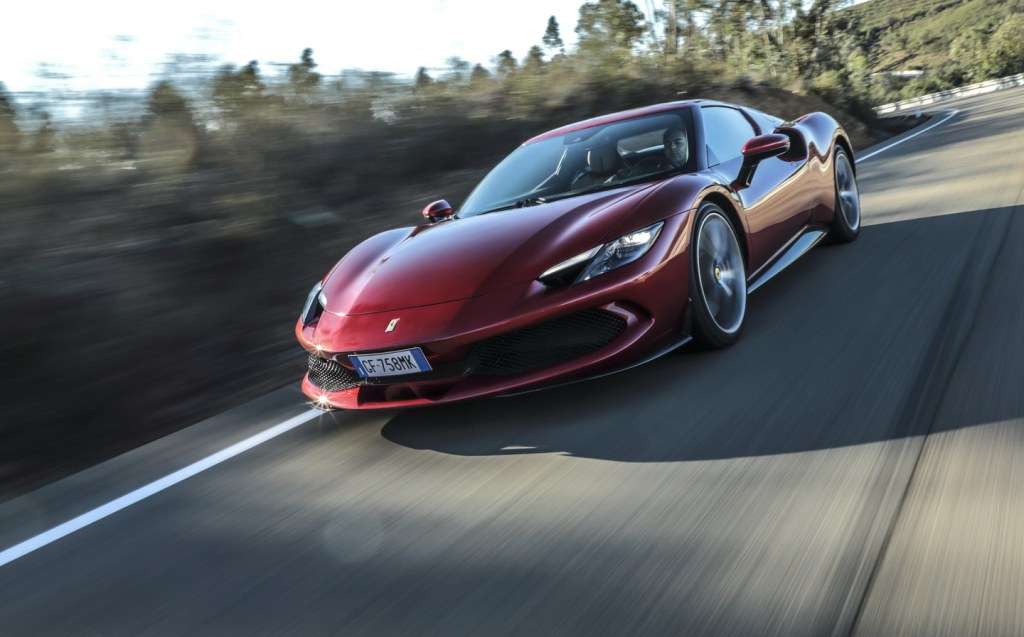
That does depend on which mode the 296 is in, however. As you turn the little switch on the steering wheel clockwise, the traction control and stability control systems are dialled back, allowing a little more slip from the rear end.
Eventually, in its most aggressive setting, the car effectively pulls the electronic safety net from under you, leaving you and the machine to get along in perfect harmony.
And for all this performance, life with the 296 GTB is very harmonious. It has a 50mm shorter wheelbase than the F8 Tributo, which makes it a little more manoeuvrable and easier to steer around town. The suspension is supple, there’s enough ground clearance to deal with speed bumps and there’s even a ‘bumpy road’ setting that might come in handy on some of the UK’s less well-kept streets.
Pricing and on-sale date
The 296 GTB is available to order now, with prices starting at £241,550. It’s considerably more expensive than the F8 Tributo but in the rarefied atmosphere of high-powered supercars, price doesn’t really matter very much. Certainly, few of Ferrari’s customers will pick the F8 just to save a few grand.
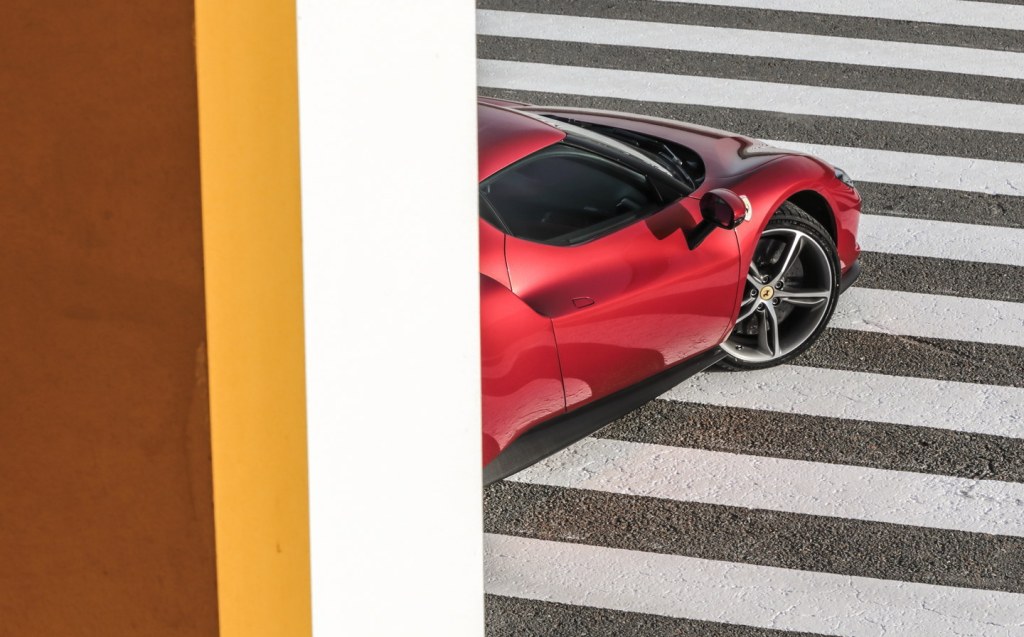
Like so many other high-luxury car makers, Ferrari charges a lot but doesn’t always deliver much – aside from the performance and looks, of course. In the 296 GTB standard equipment includes everything you need, including the digital instrument cluster and climate control, but there are plenty of personalisation options to choose from, including racing stripes and carbon-fibre trim.
Pick some of those and the really expensive extras such as the lightweight Fiorano pack with its extra downforce, and you could easily be looking at a £300,000 car.
Verdict: Ferrari 296 GTB review
The 296 GTB’s plug-in hybrid system may have stolen all the headlines but it isn’t the main reason for buying one. In terms of both performance and handling, this is one of the best Ferraris in recent years, full stop.
It’s also beautiful inside and out, and though it isn’t especially economical for a plug-in hybrid, it has the potential to be miles more efficient than most of its rivals.
Having the ability to cruise around in silent, stealthy electric mode will be an advantage for some customers, but the 296 GTB is at its best when the hybrid system is used for performance. Do that, and the Ferrari becomes one of the best and most spectacular supercars that money can buy.
Related articles
- After reading this review of the 2022 Ferrari 296 GTB, you might like to read about the topless 205mph McLaren 765LT Spider
- It’s also worth checking out what Jeremy Clarkson had to say about the Ferrari Roma
- Read Driving.co.uk’s review of the McLaren 765LT, which Will Dron reckons probably “has amphetamines licked” when it comes to thrills
Latest articles
- Bedeo Defender 110 2024 review: Does electric Landie with in-wheel motors make for a perfect off-roader?

- F1 2024 calendar and race reports: What time the next grand prix starts and what happened in the previous rounds

- BYD Seal U 2024 review: Chinese brand adds plug-in hybrid SUV to its electrified line-up

- New Mini John Cooper Works revs up for Nürburgring 24-hour race debut

- Ineos Grenadier Quartermaster 2024 review: British pick-up is a tough mudder but too flawed to be a real workhorse




